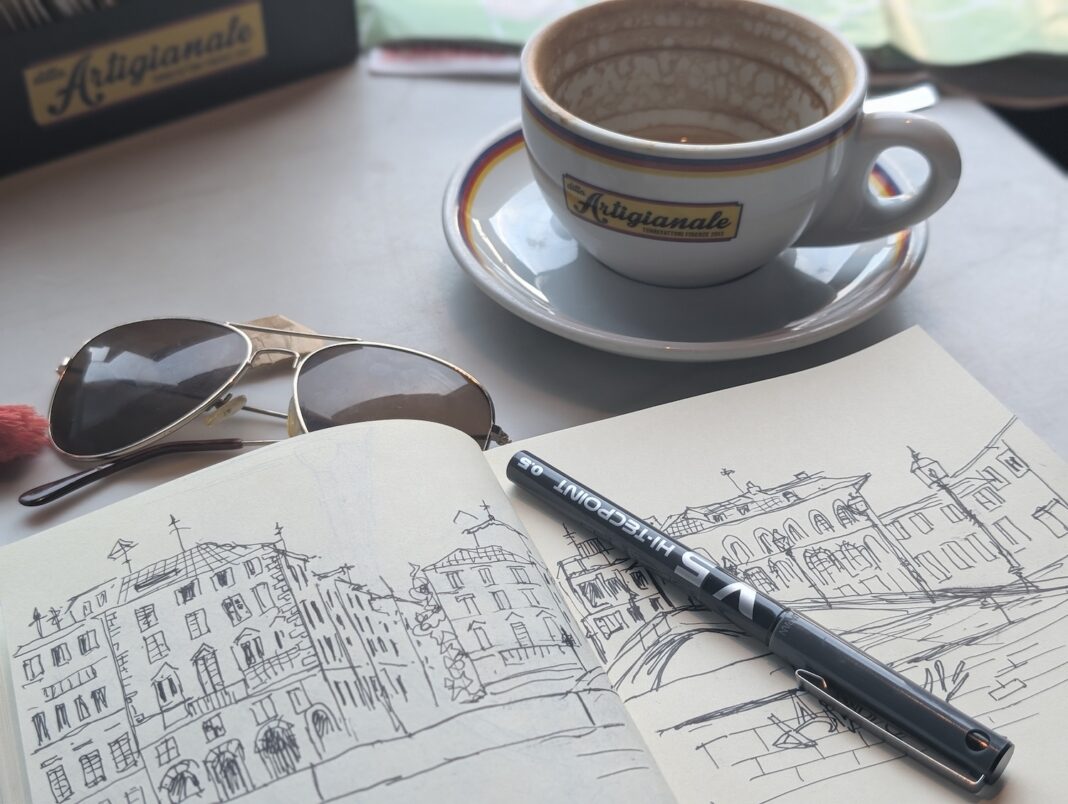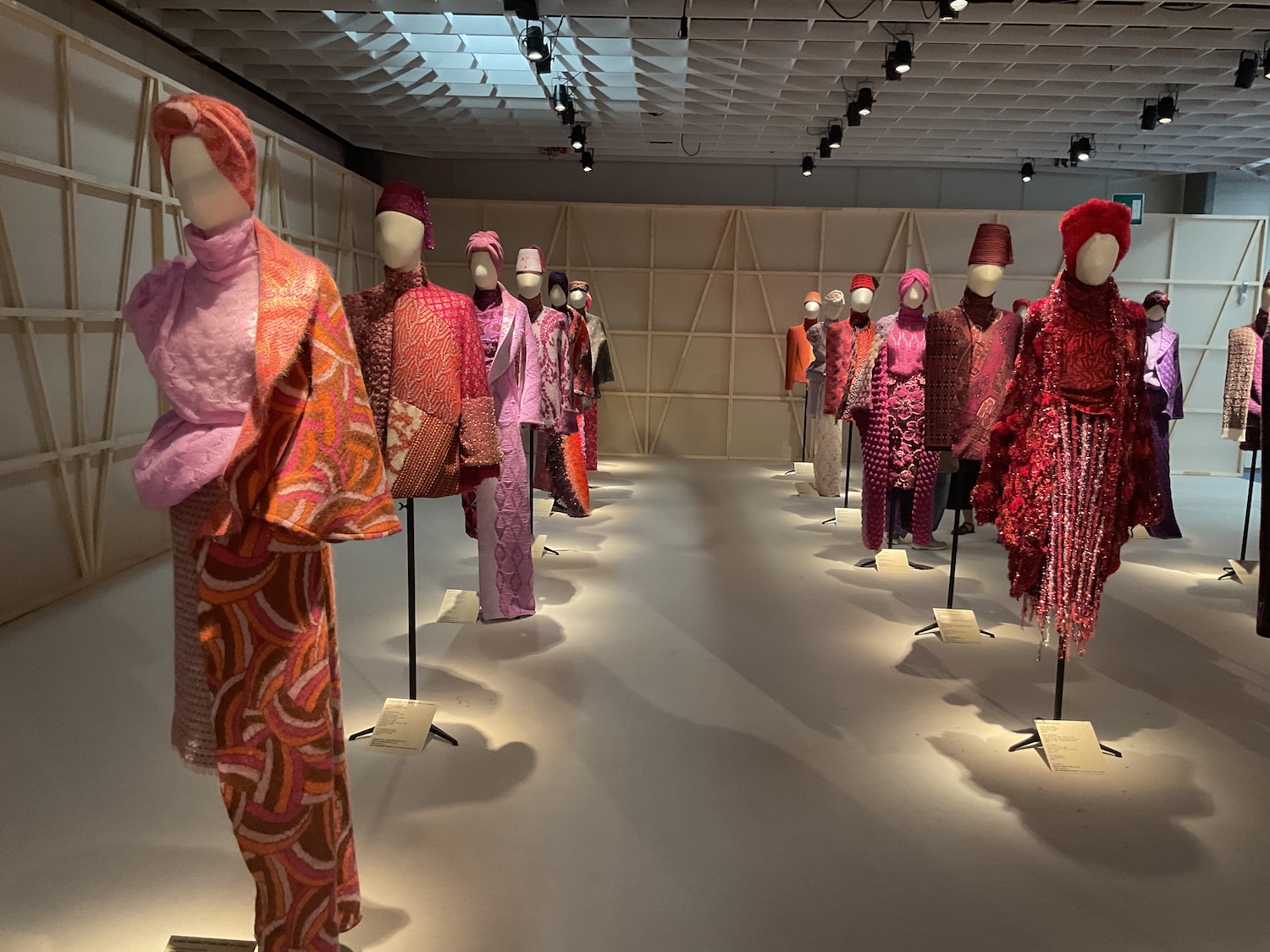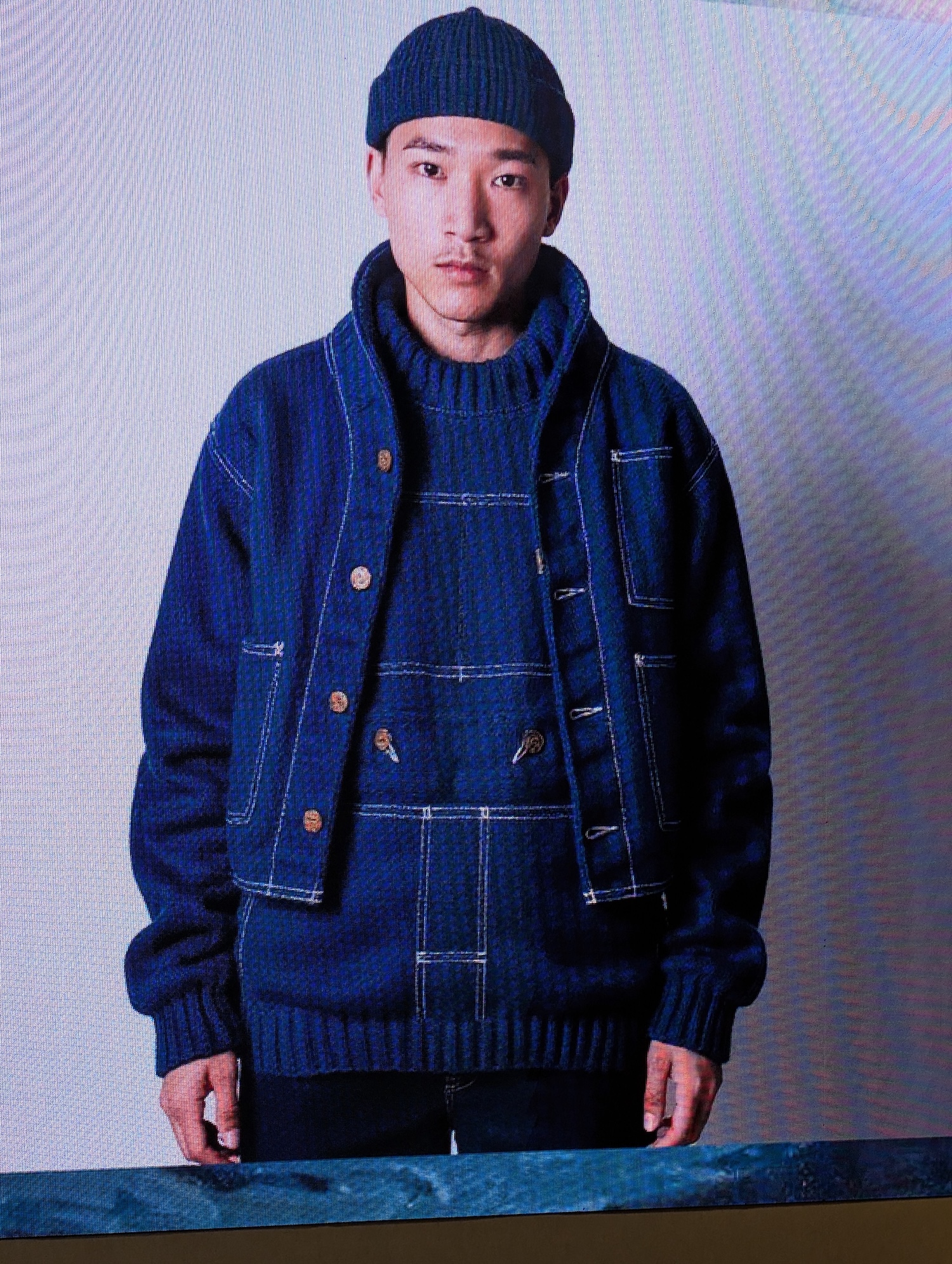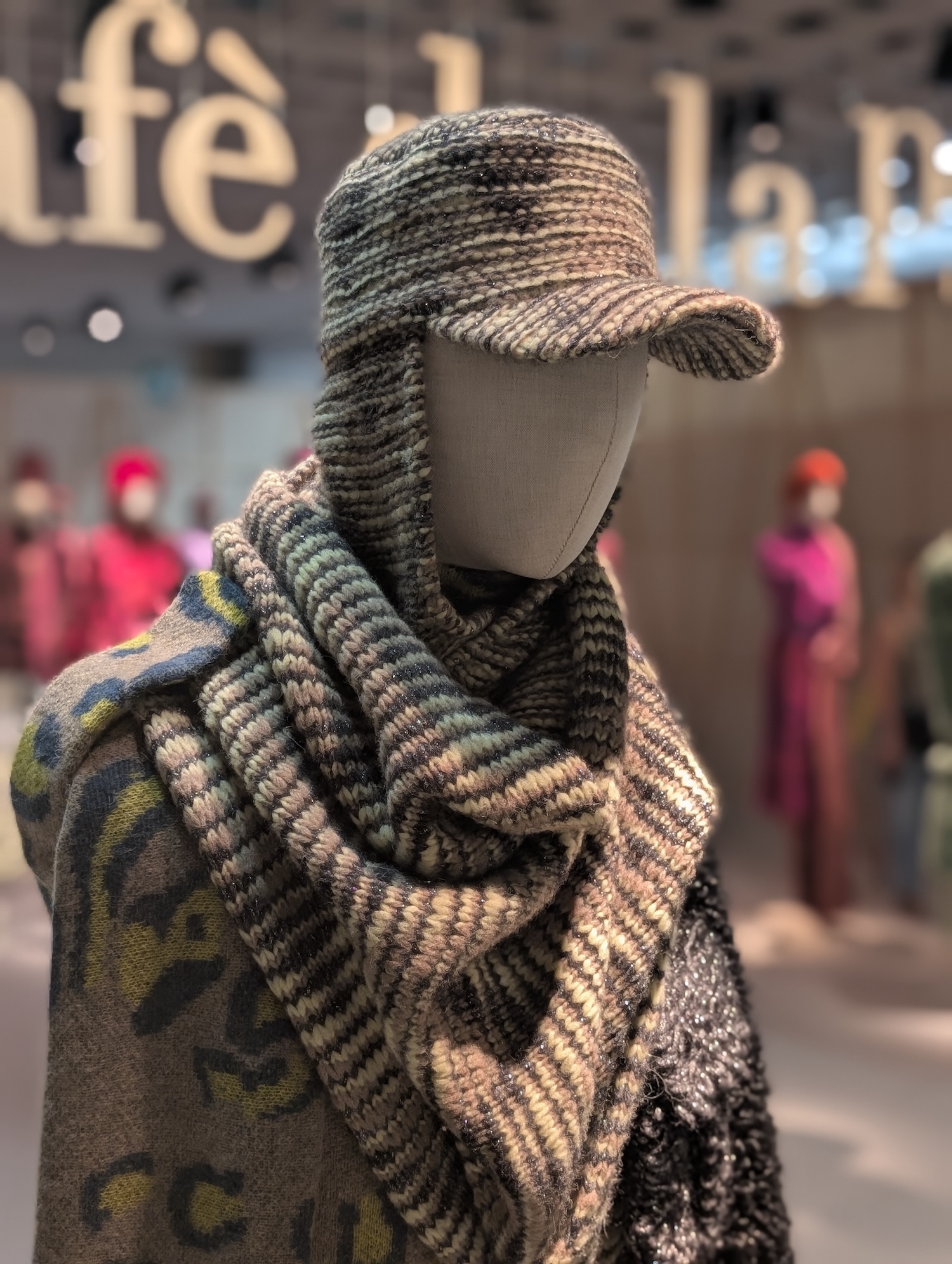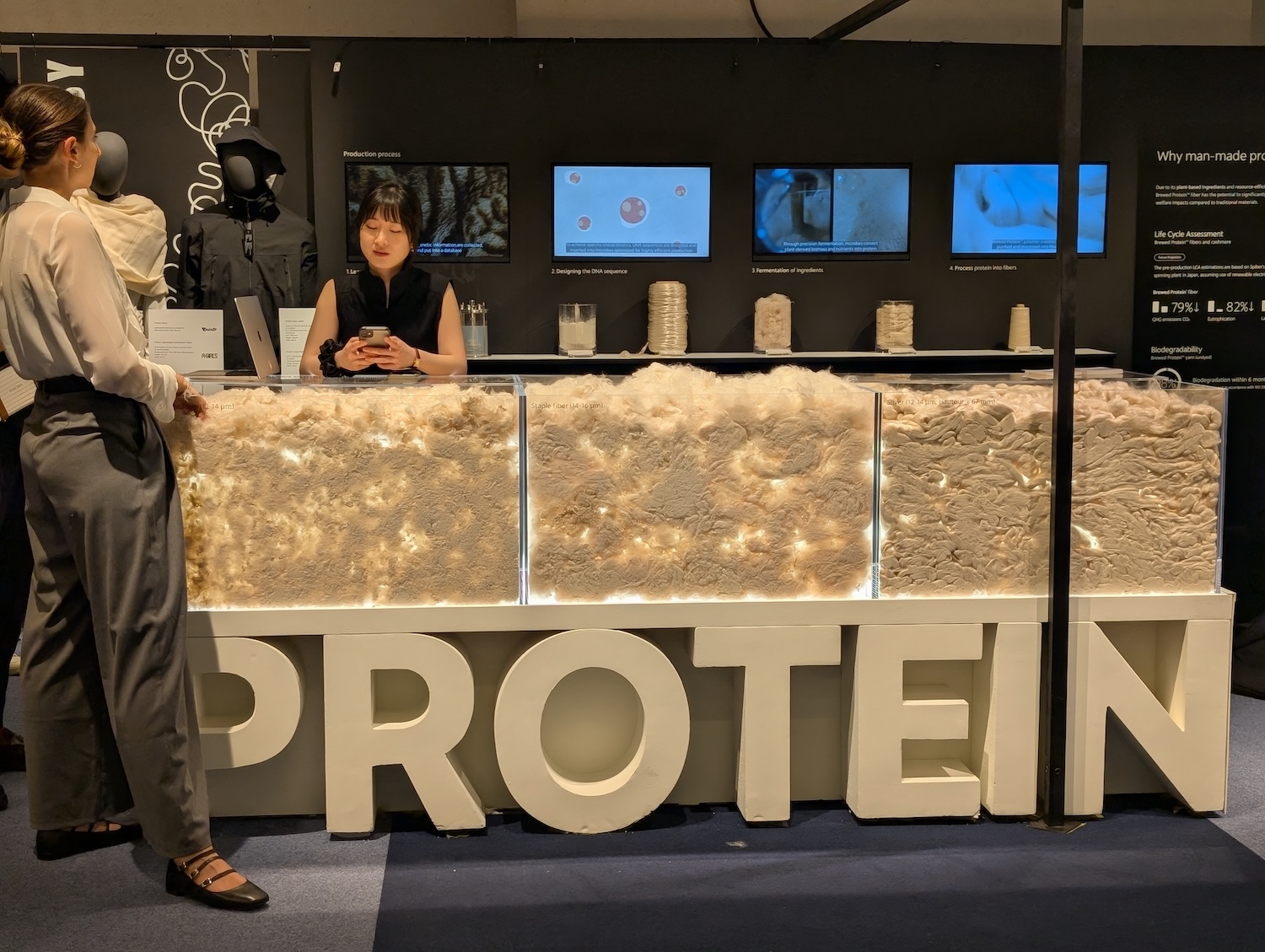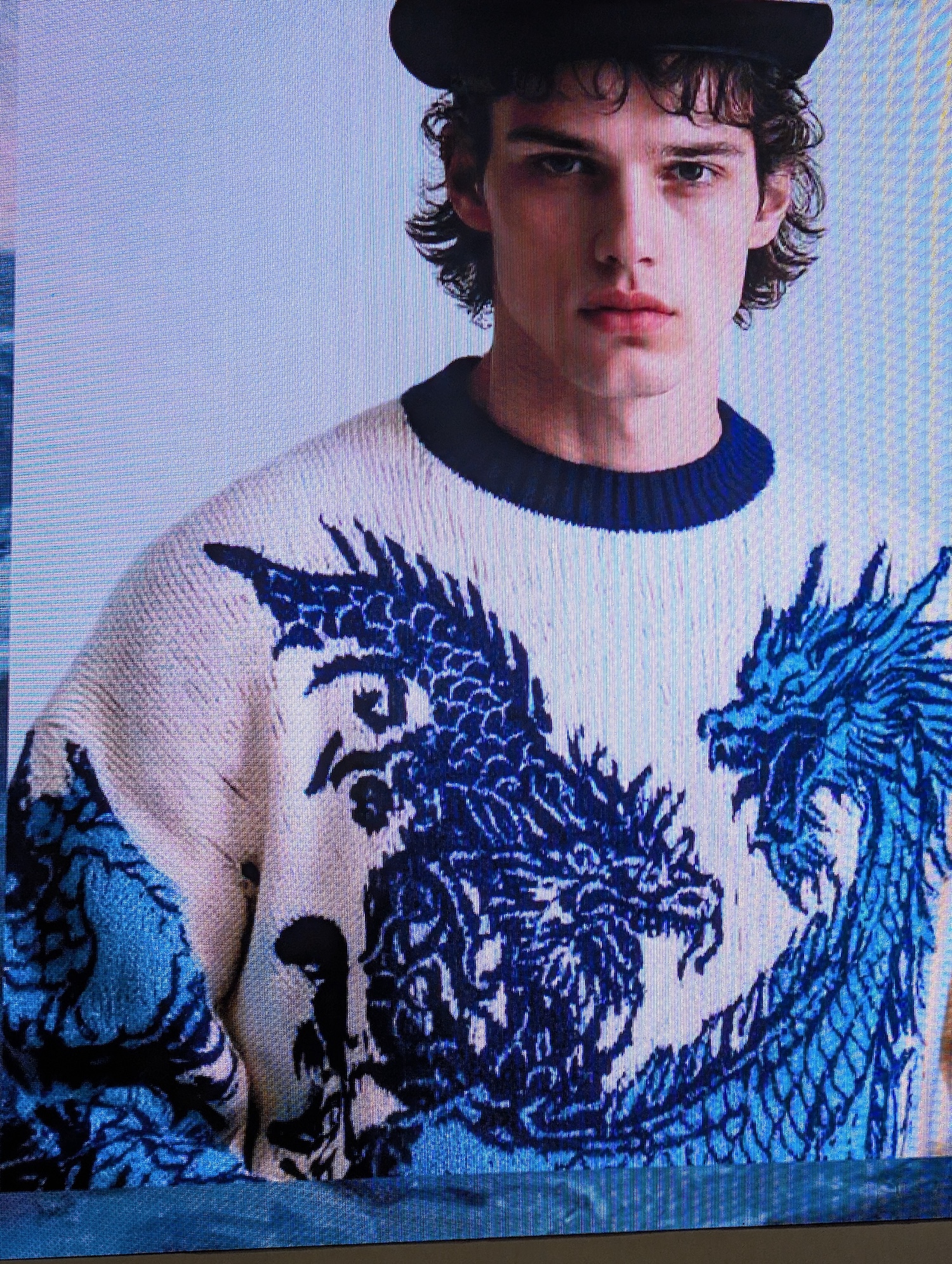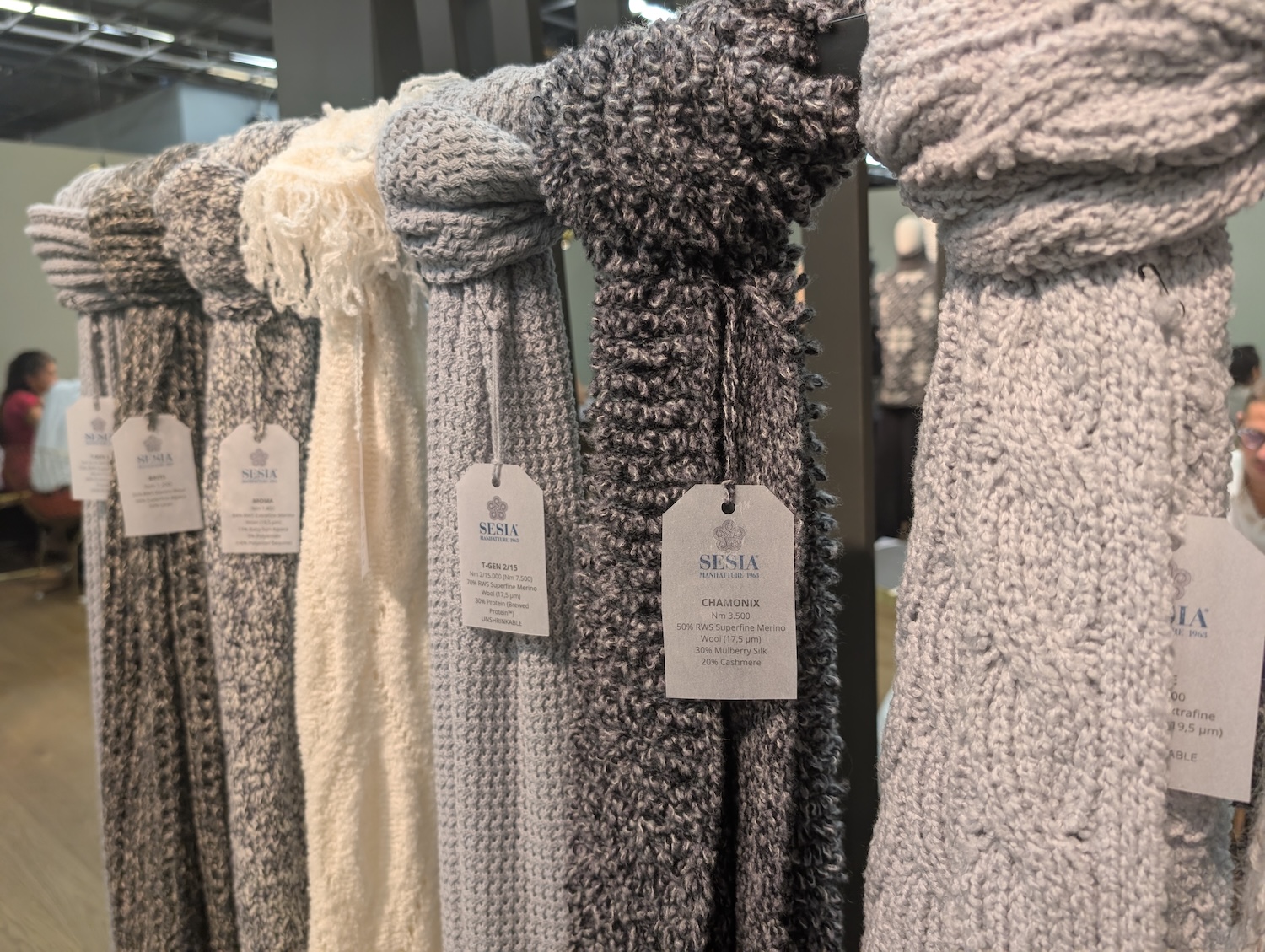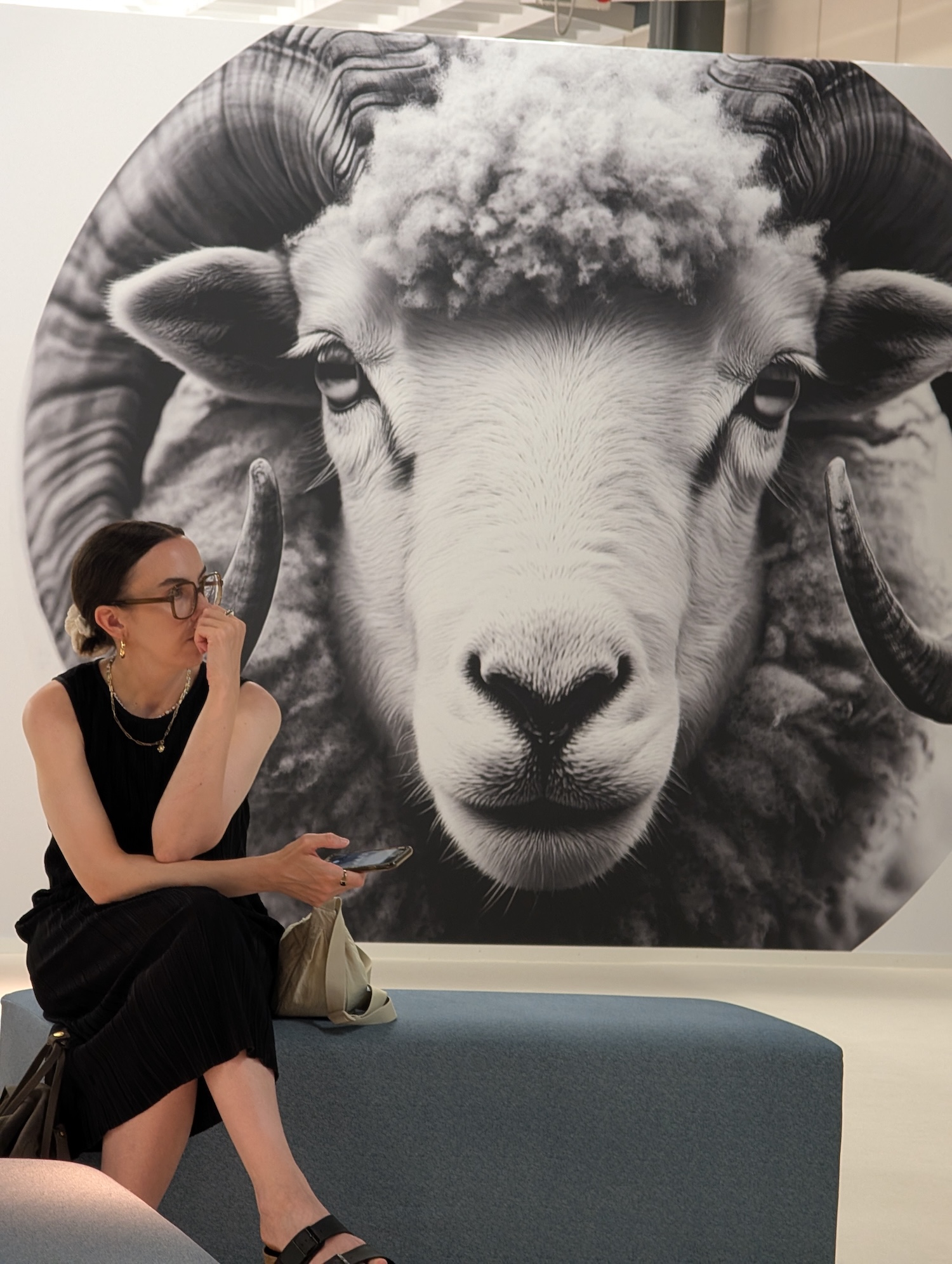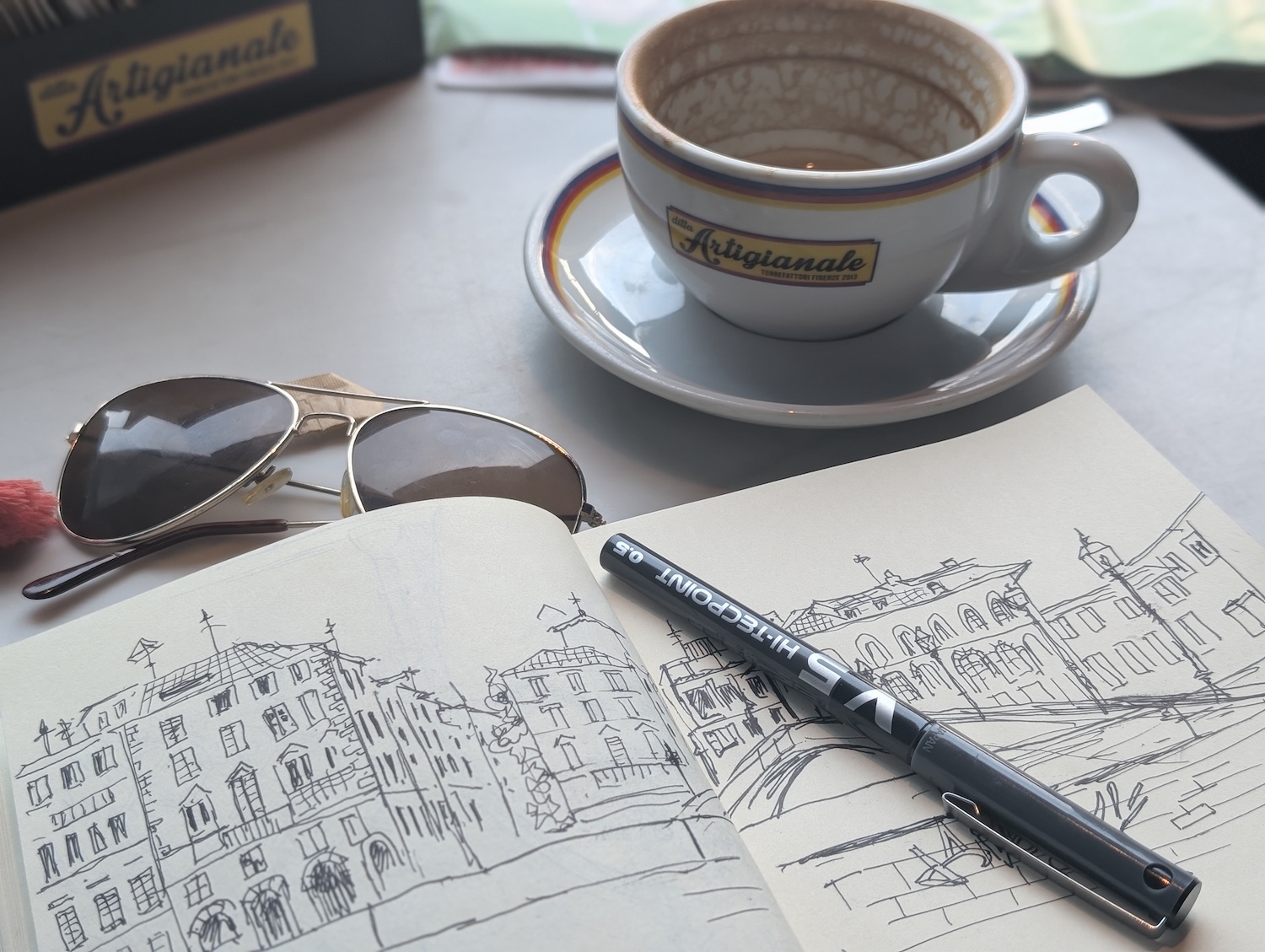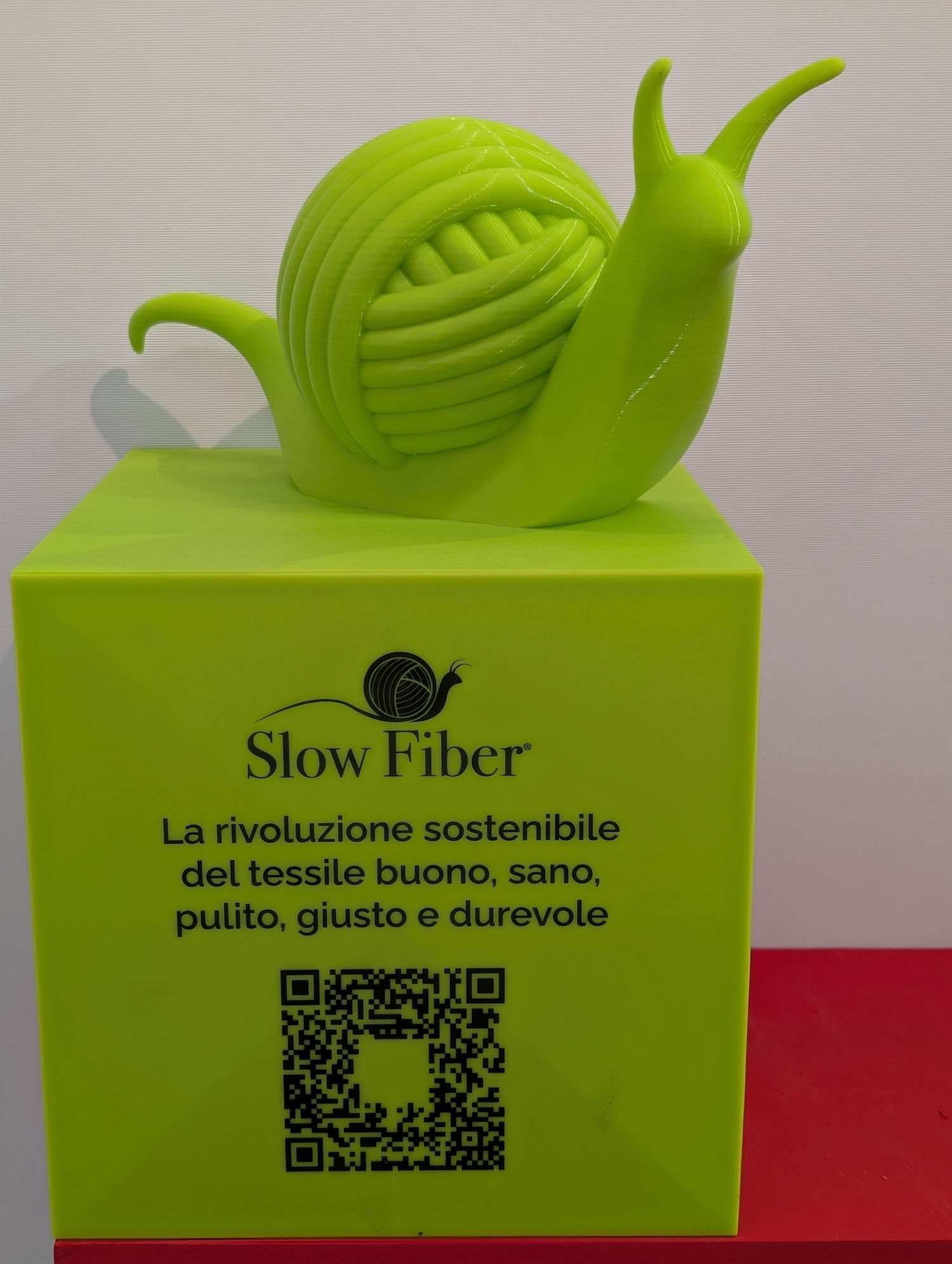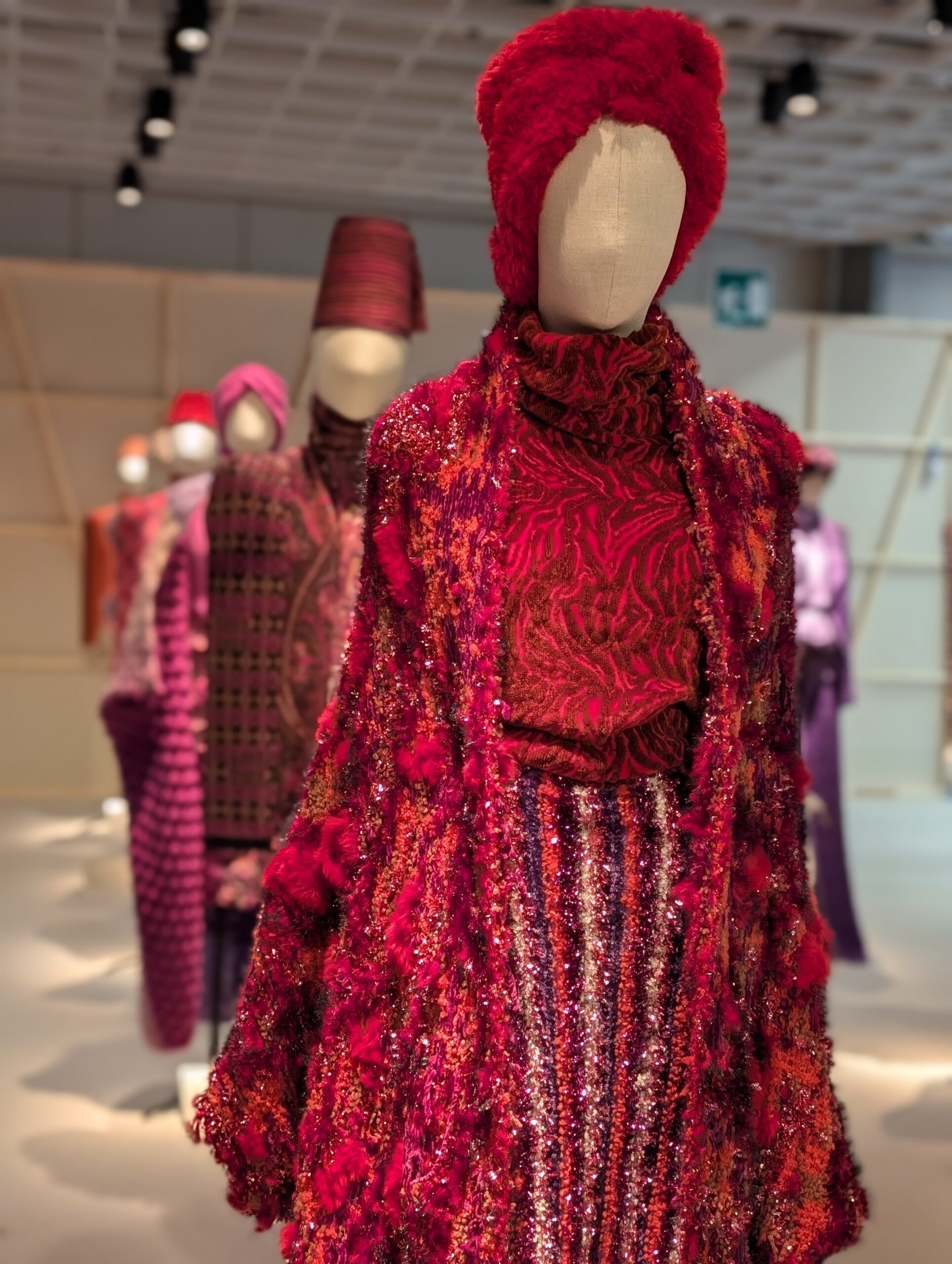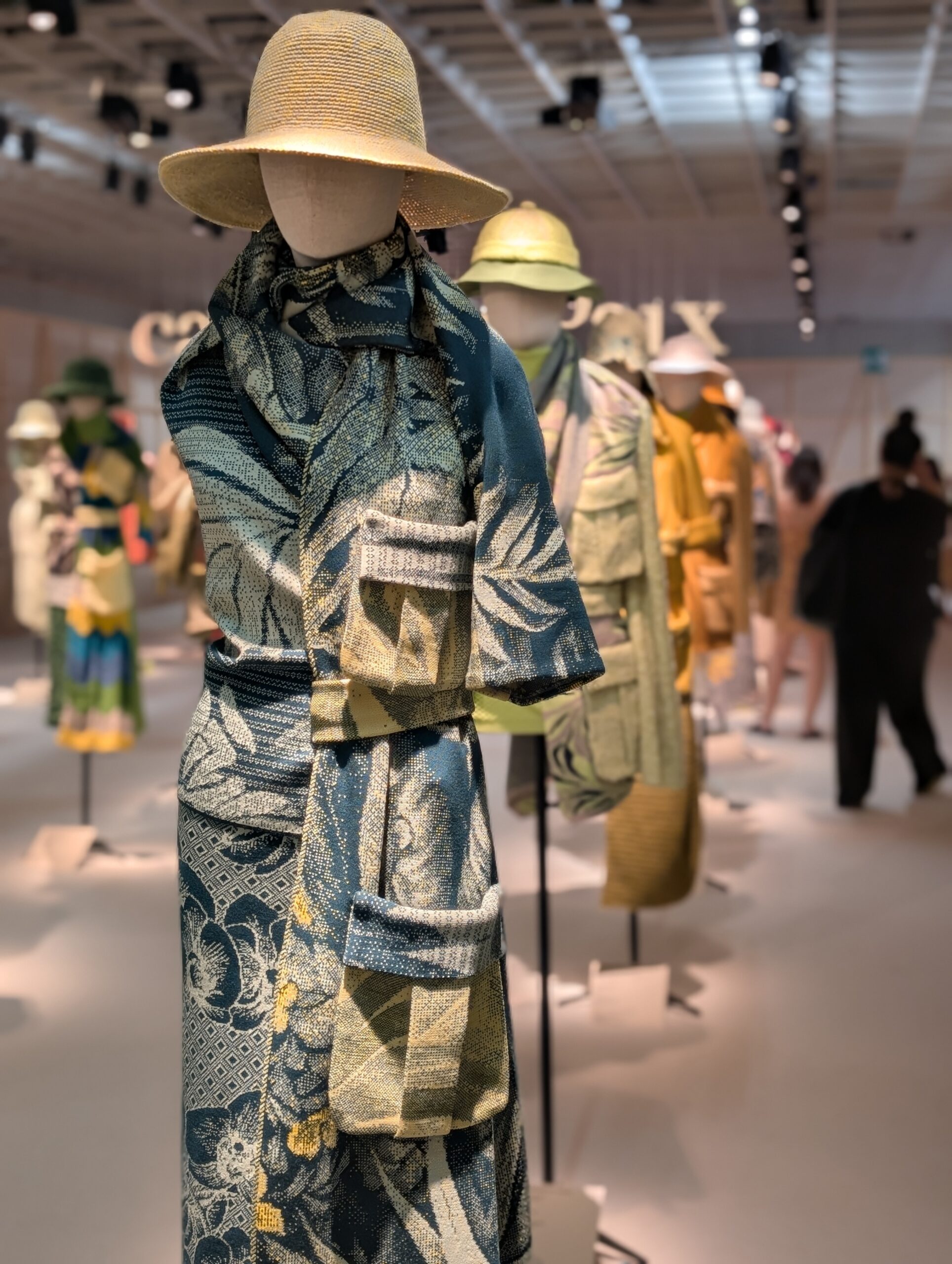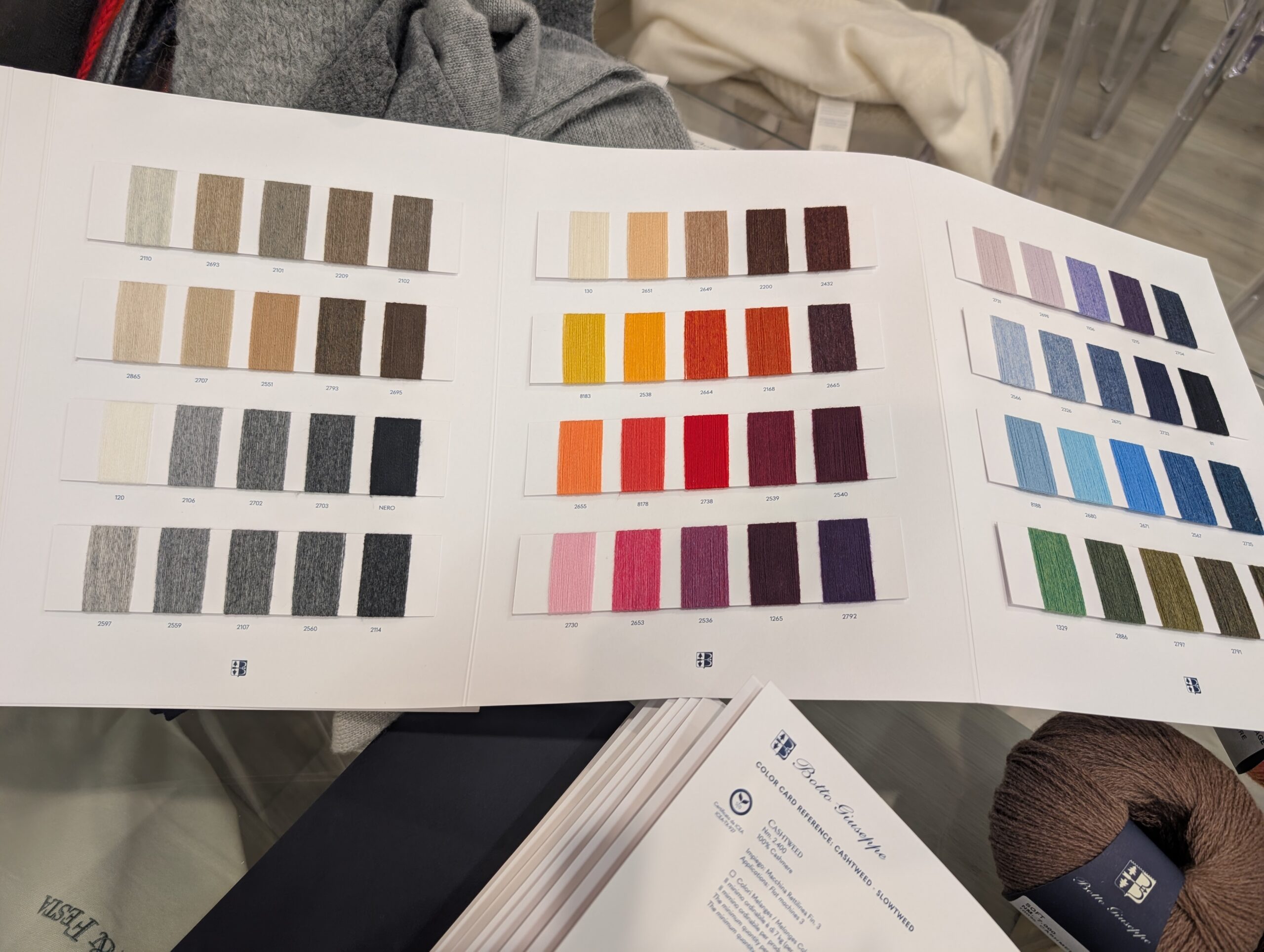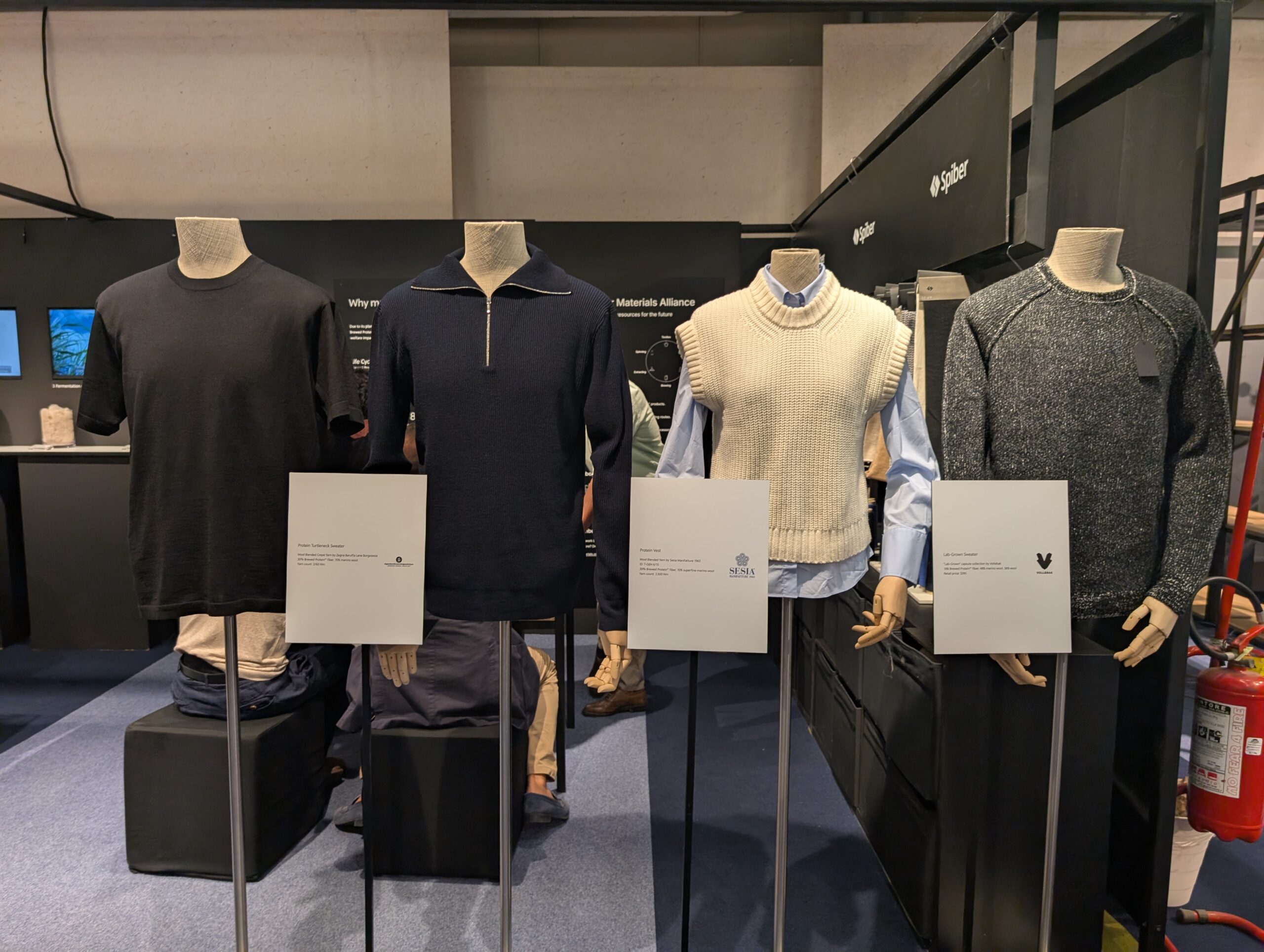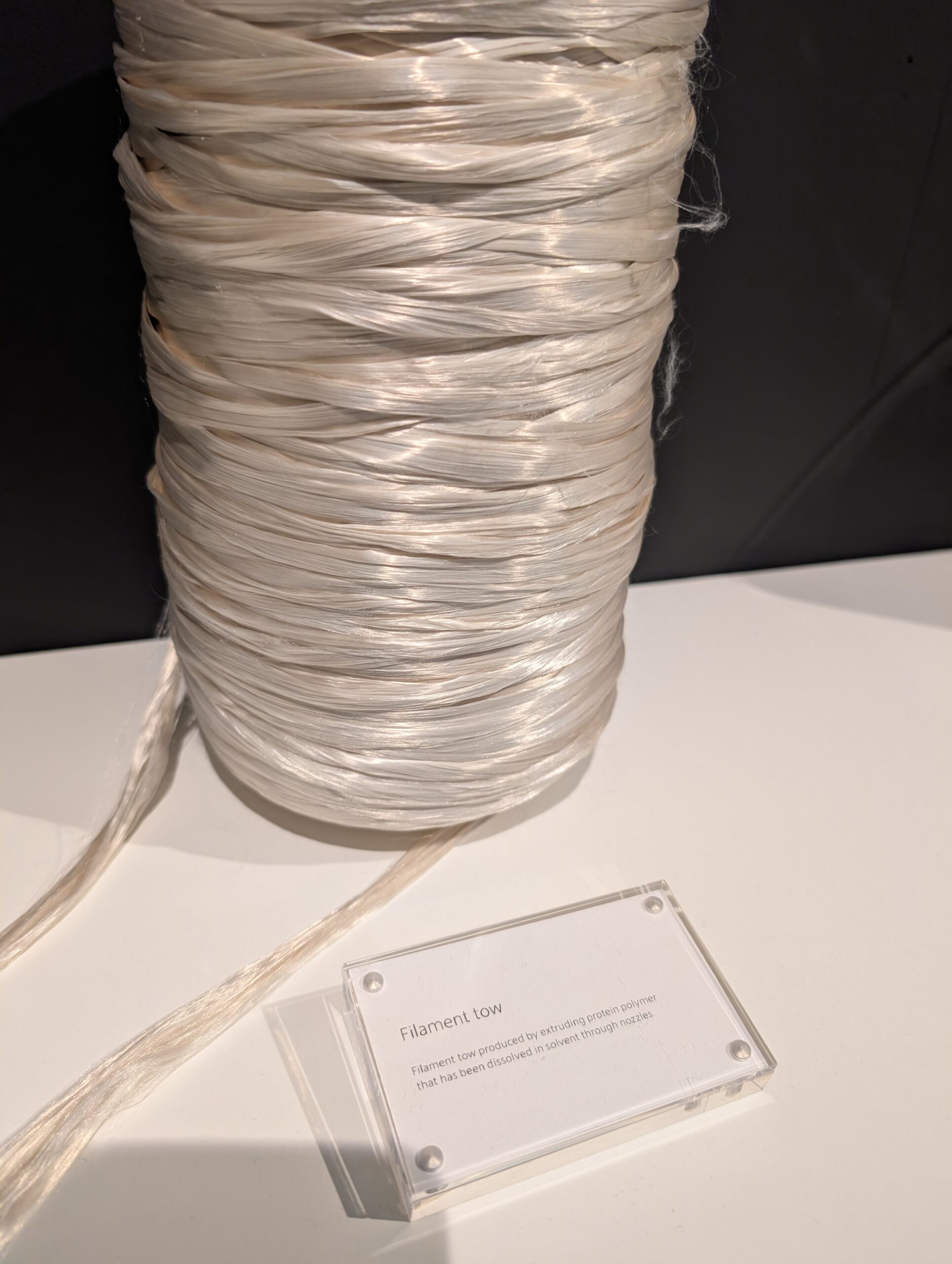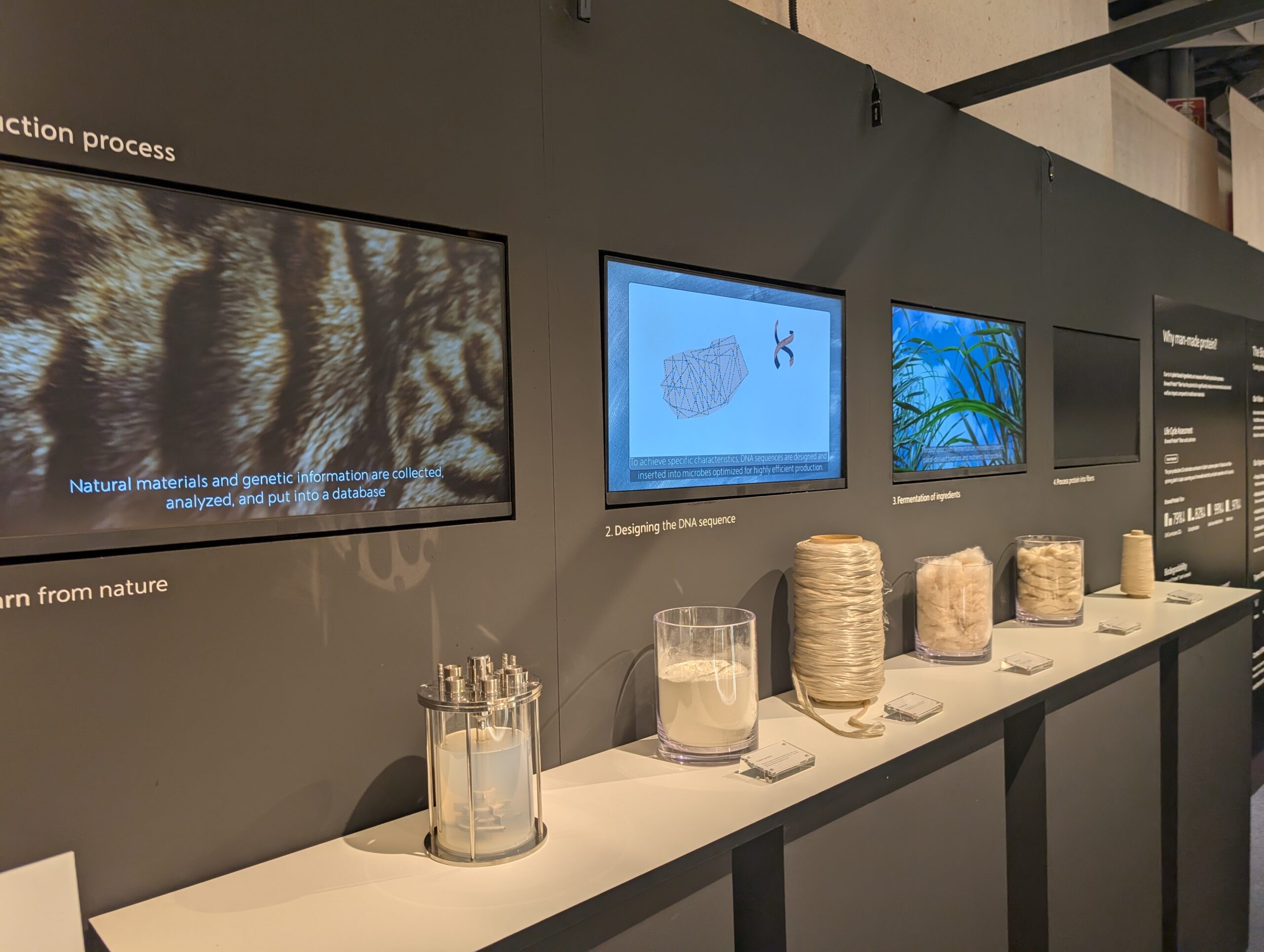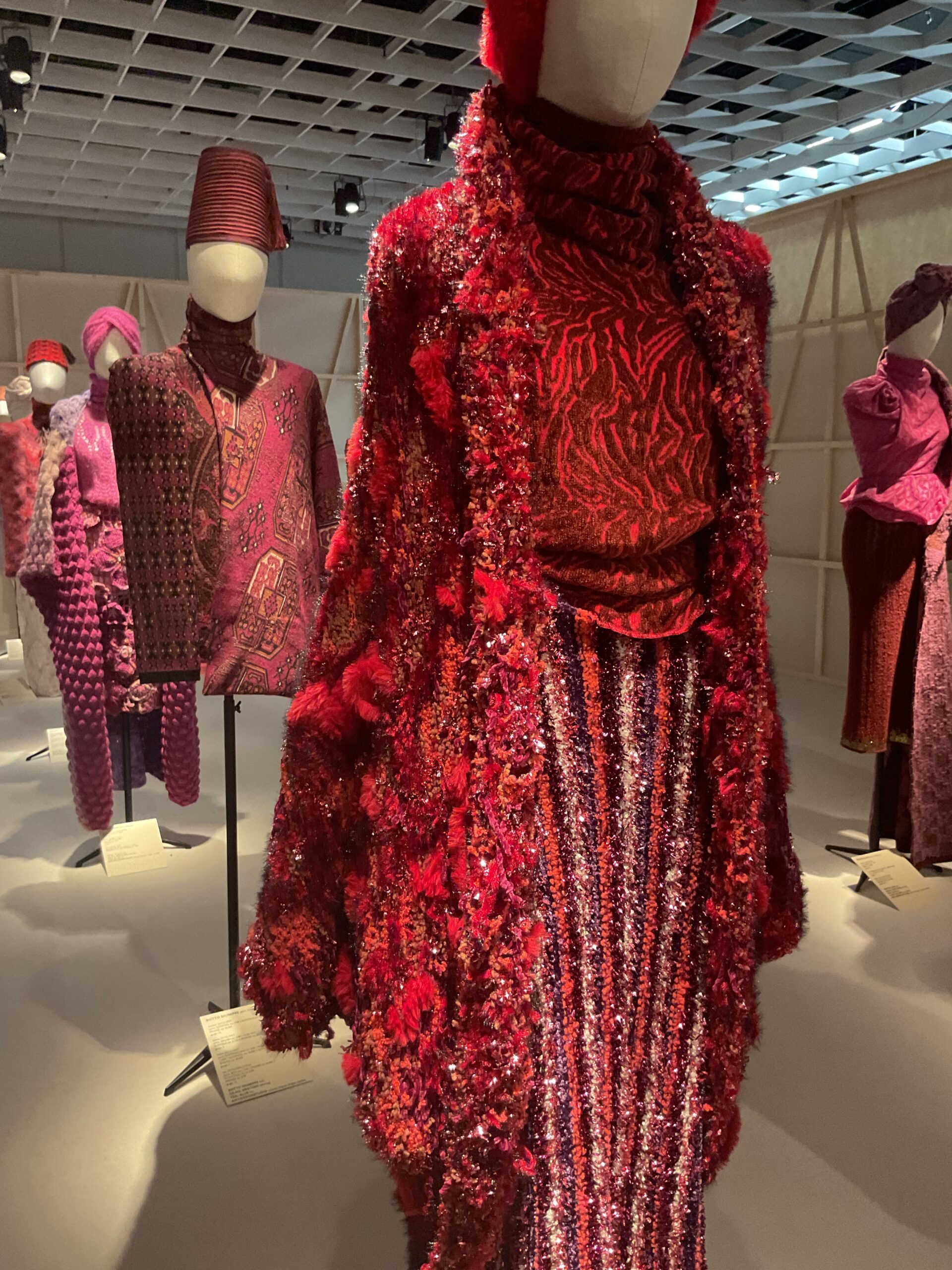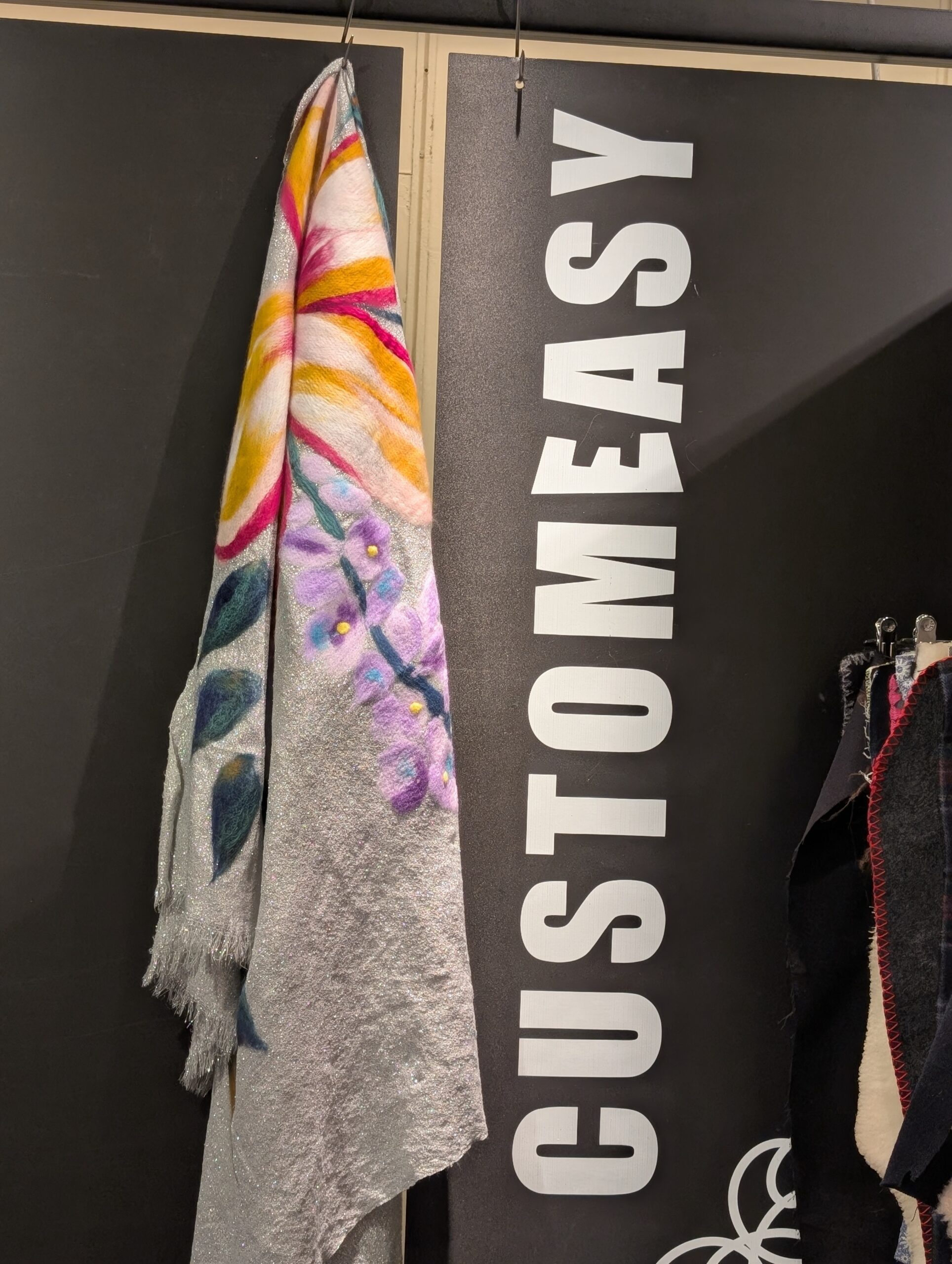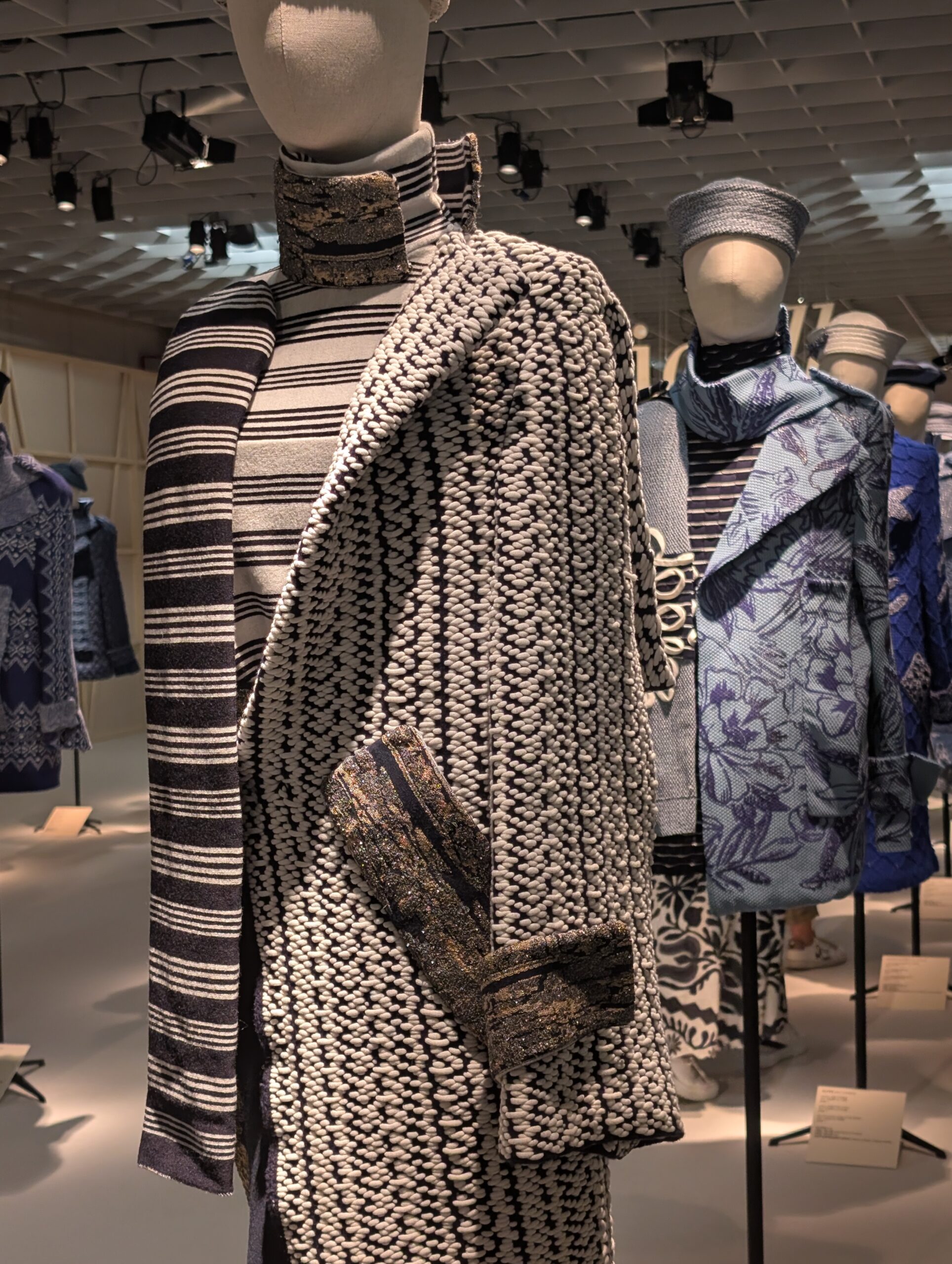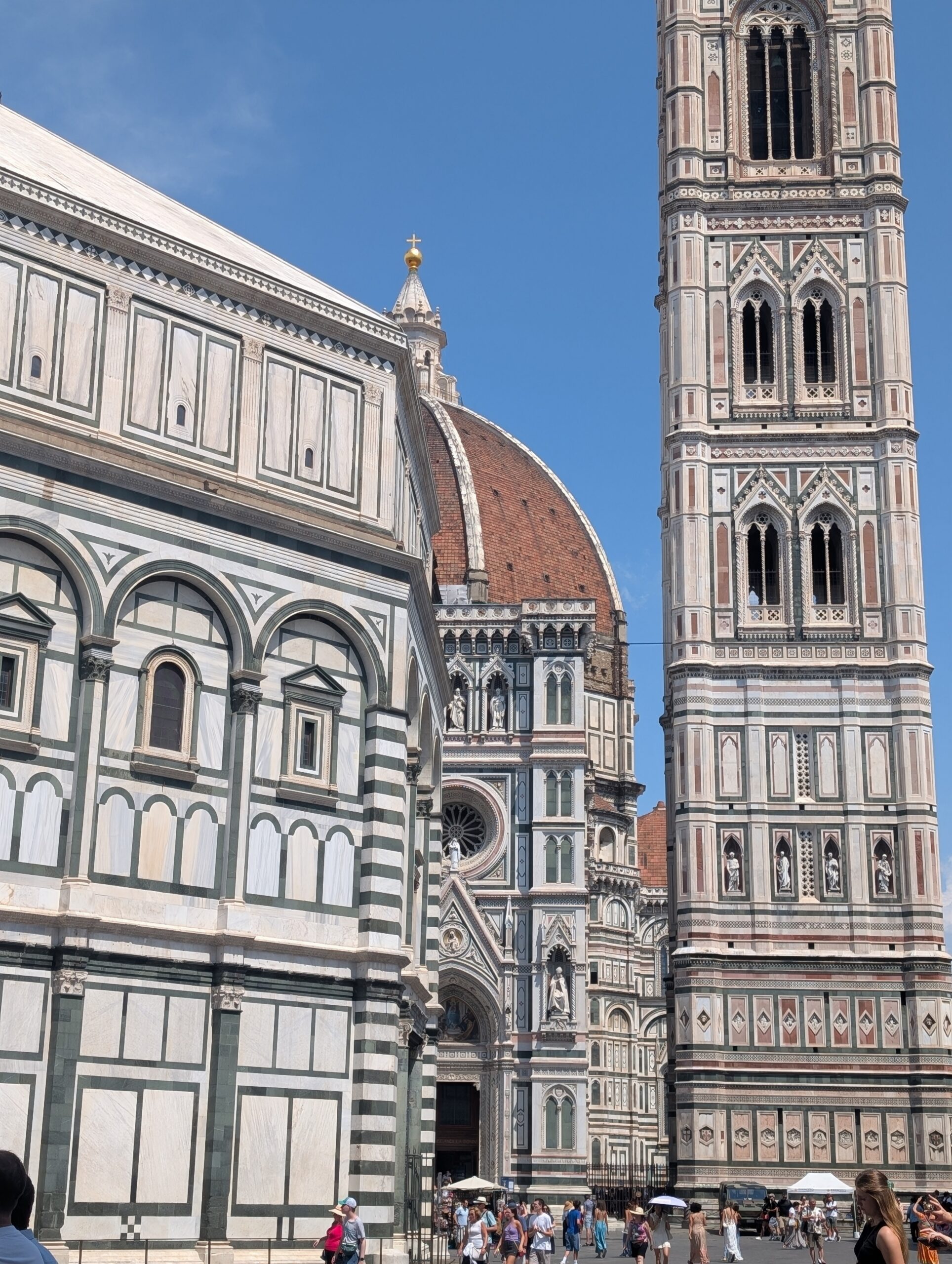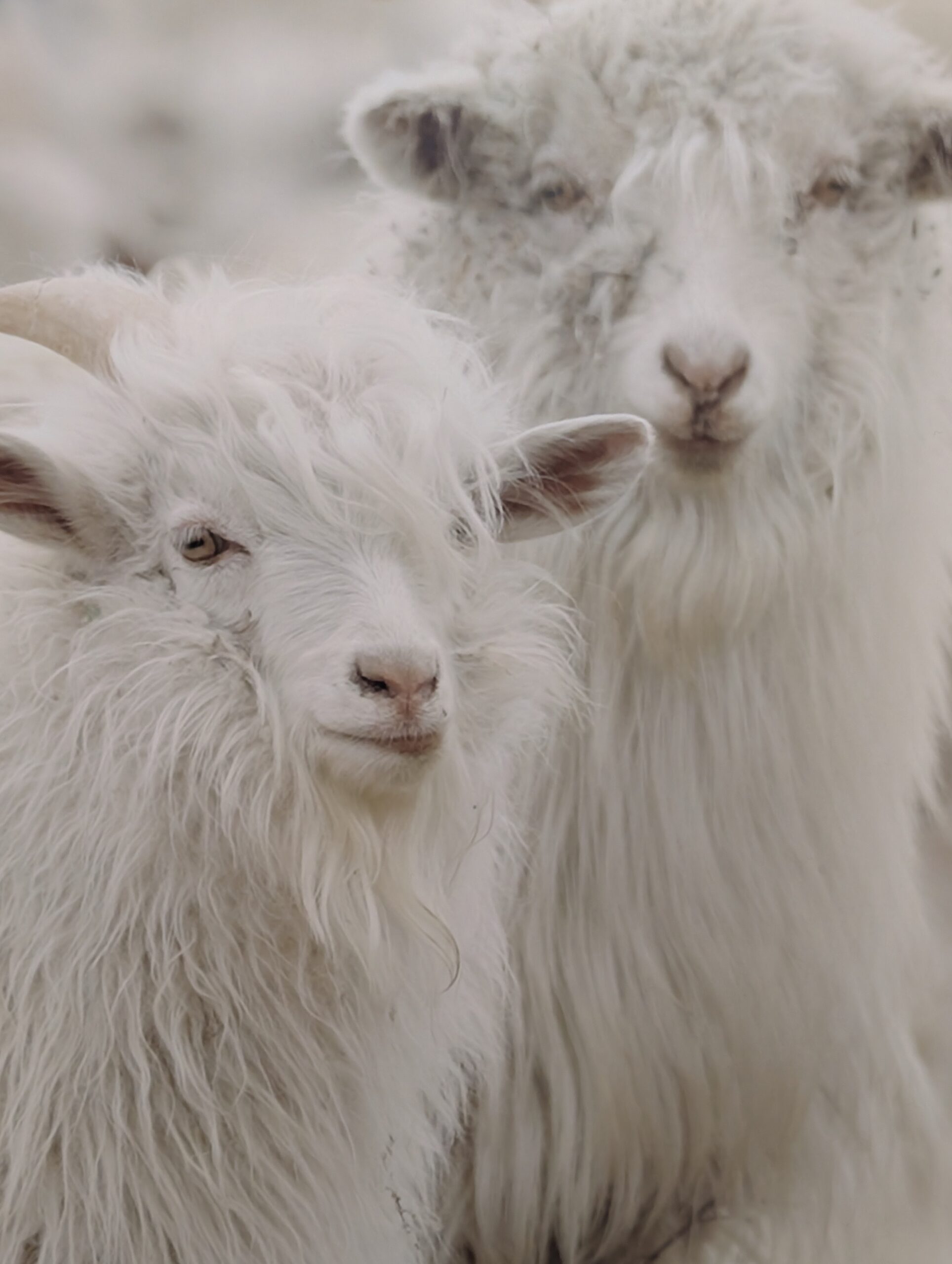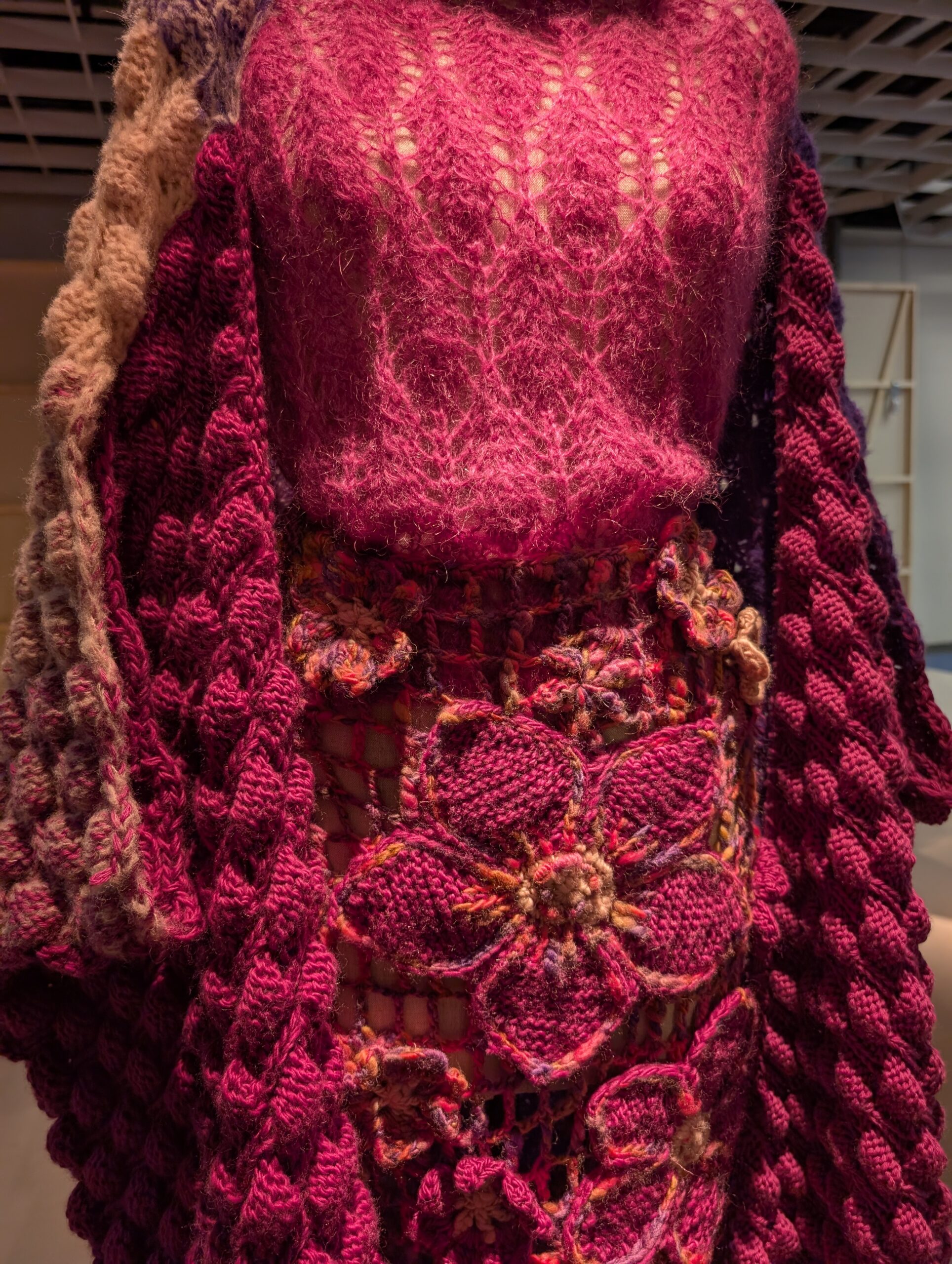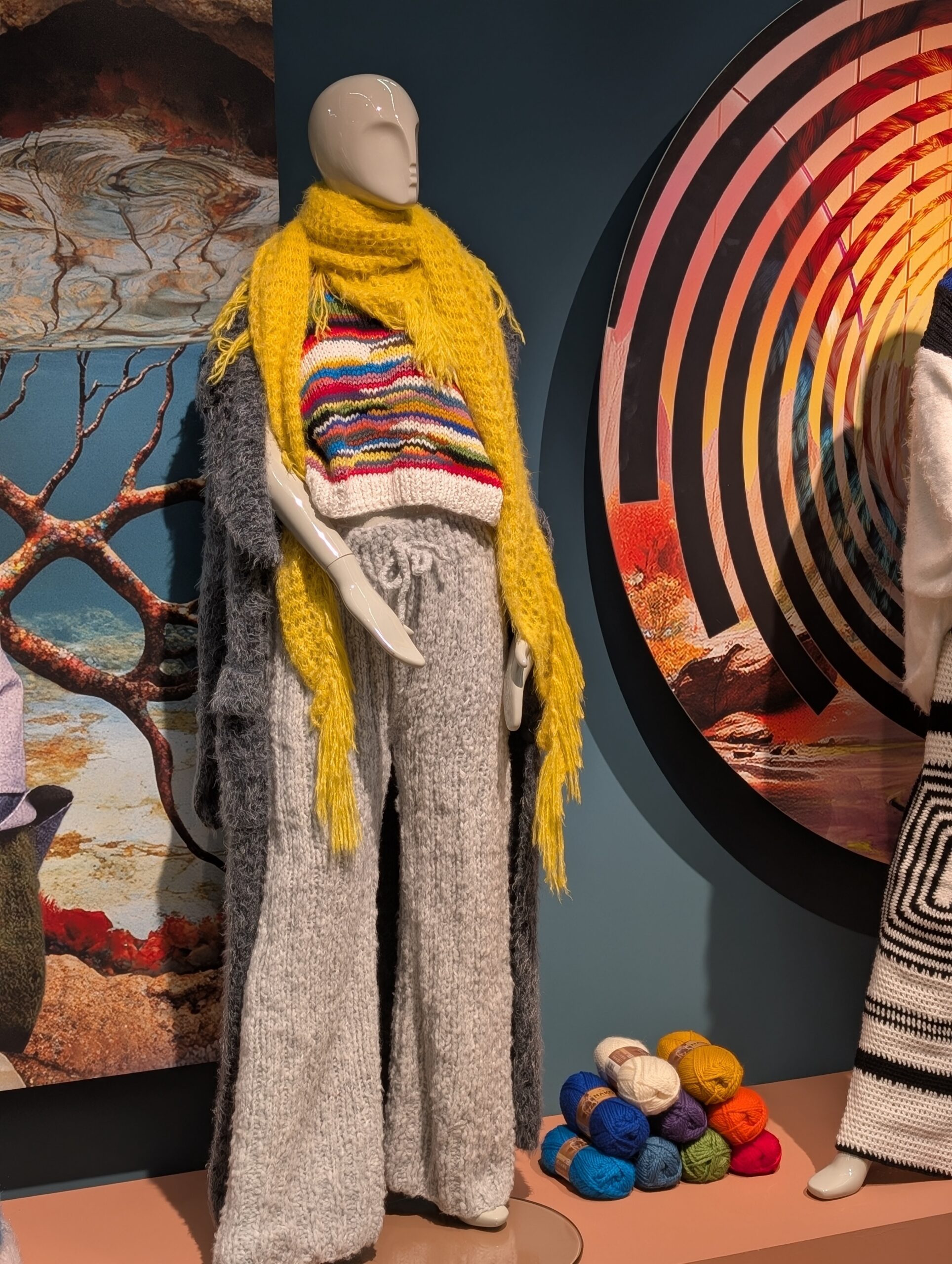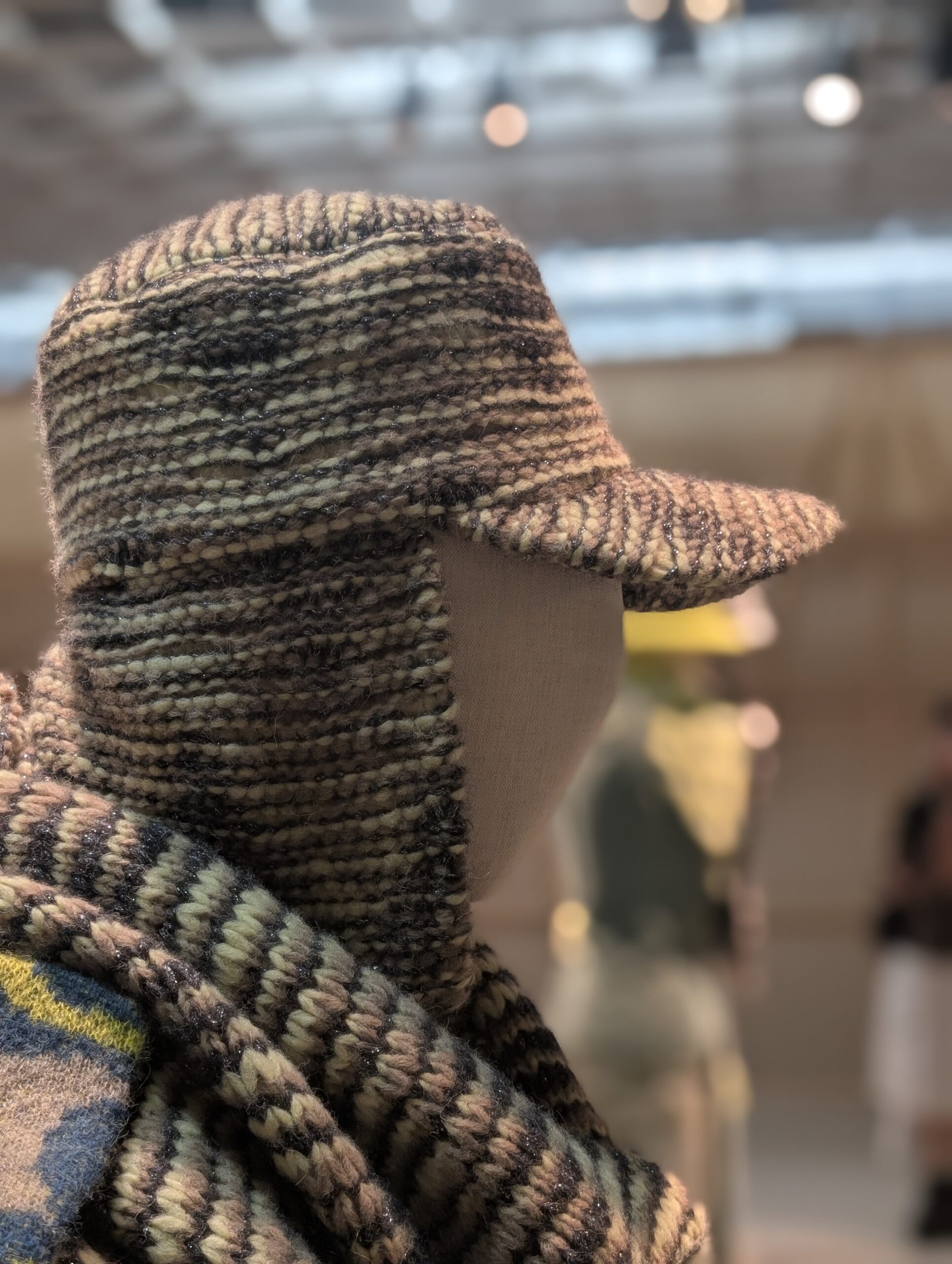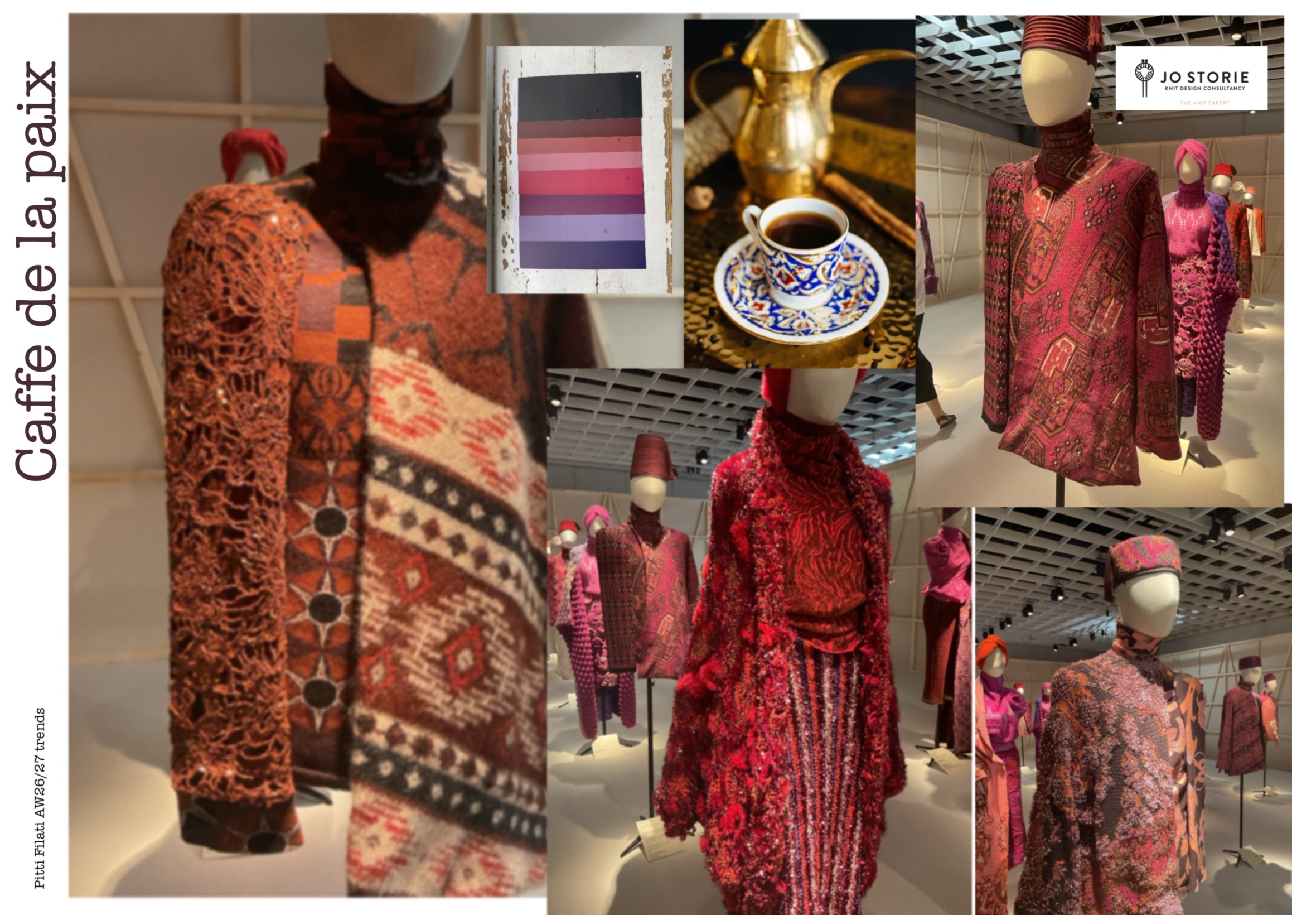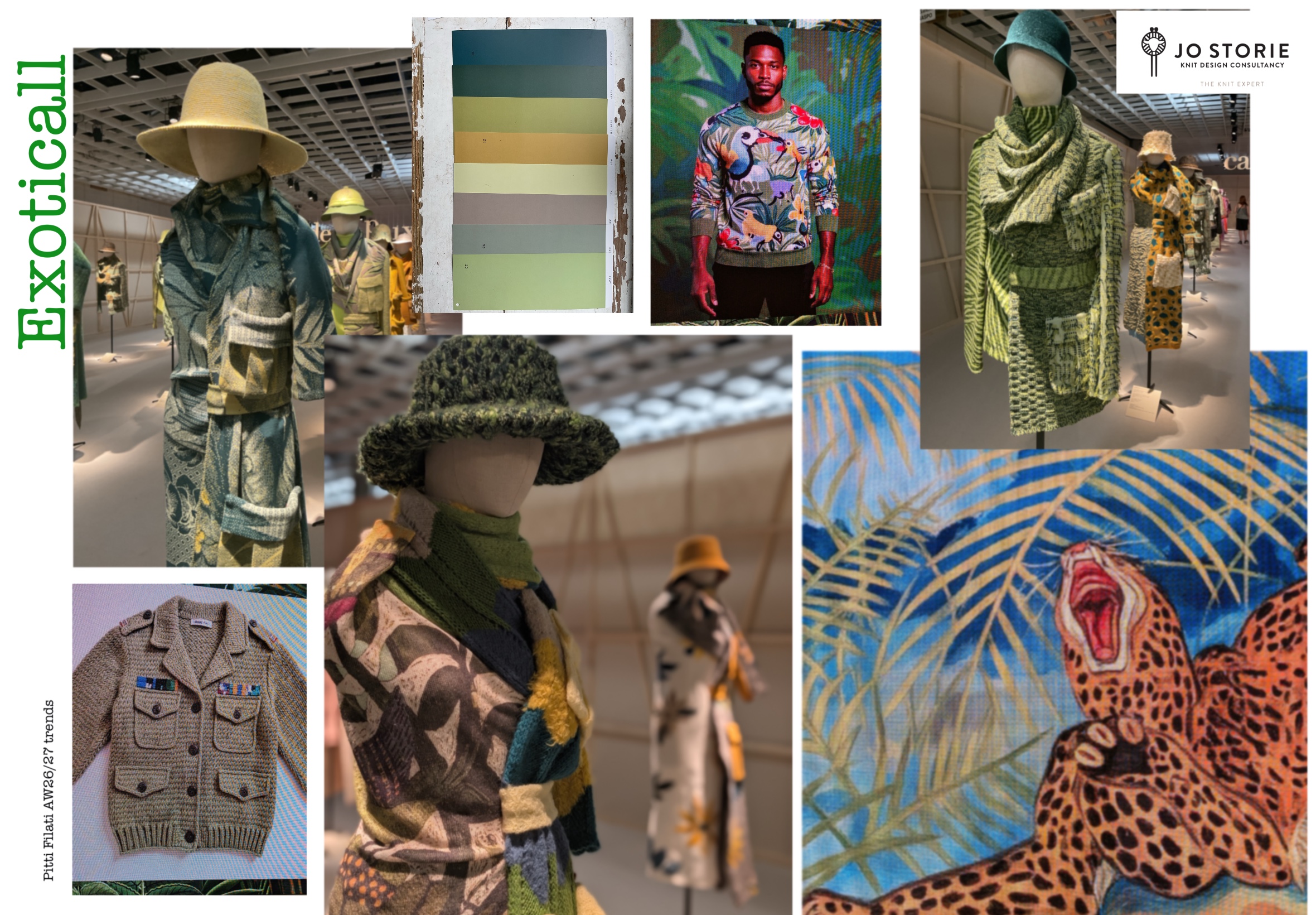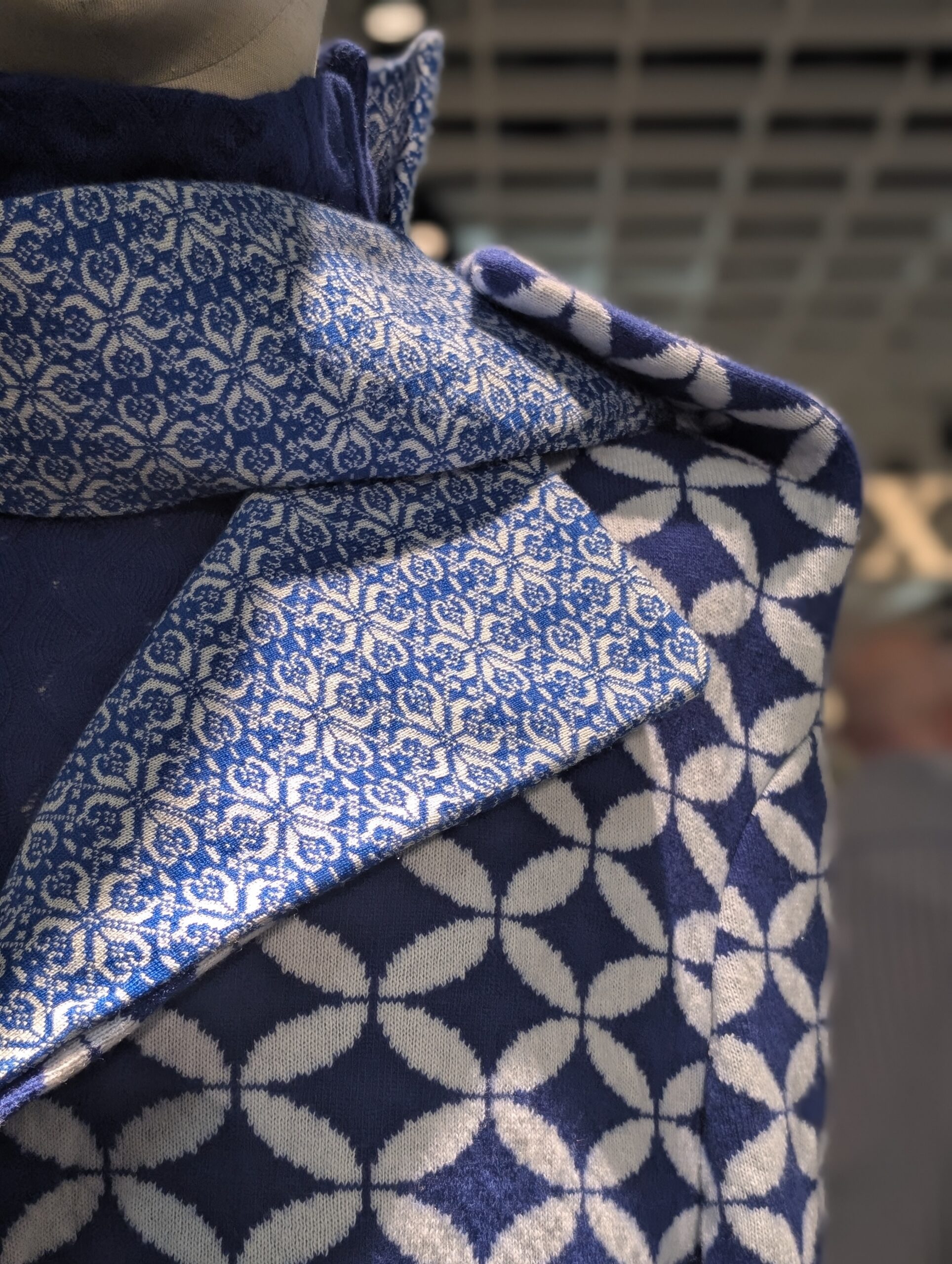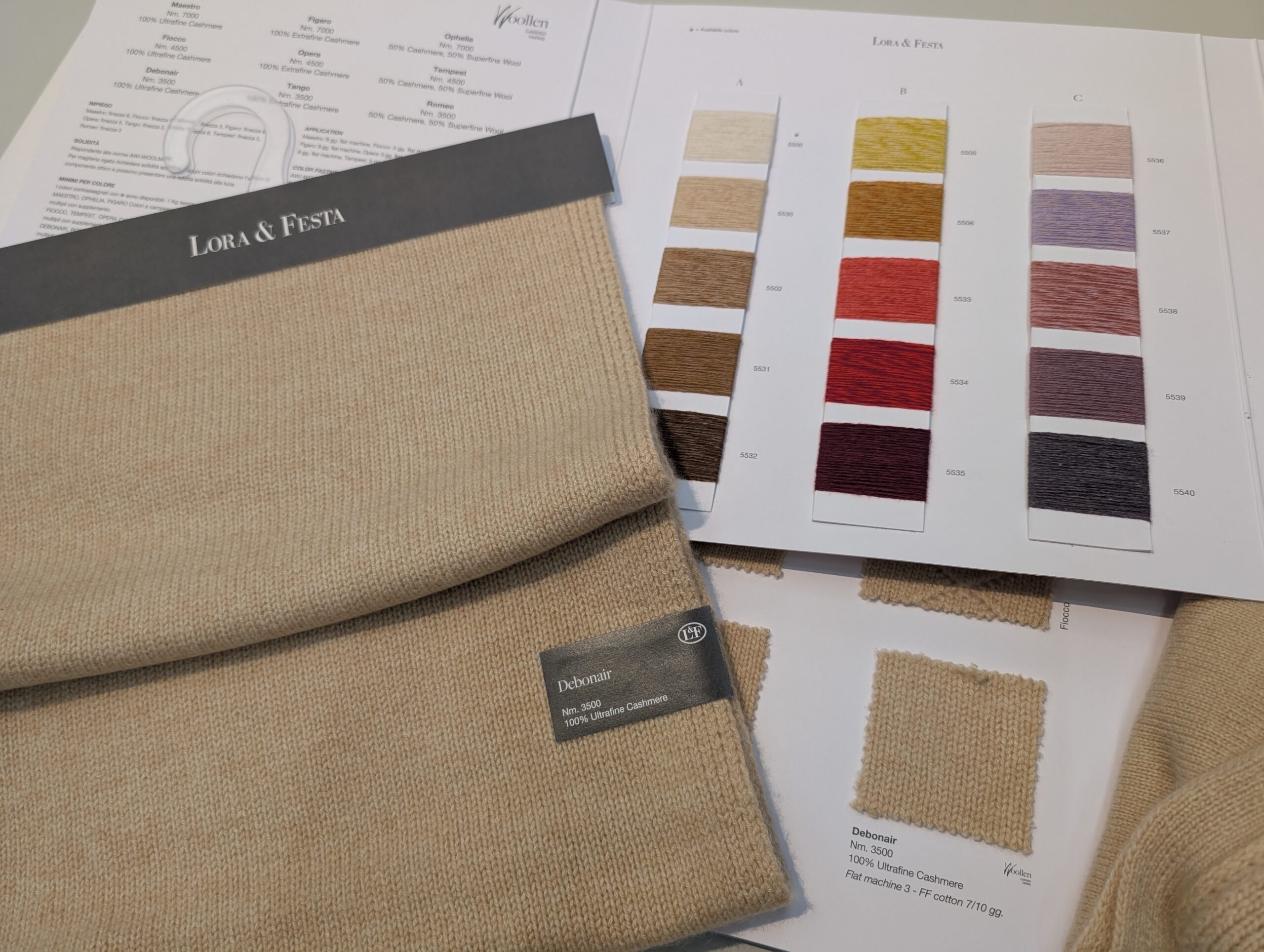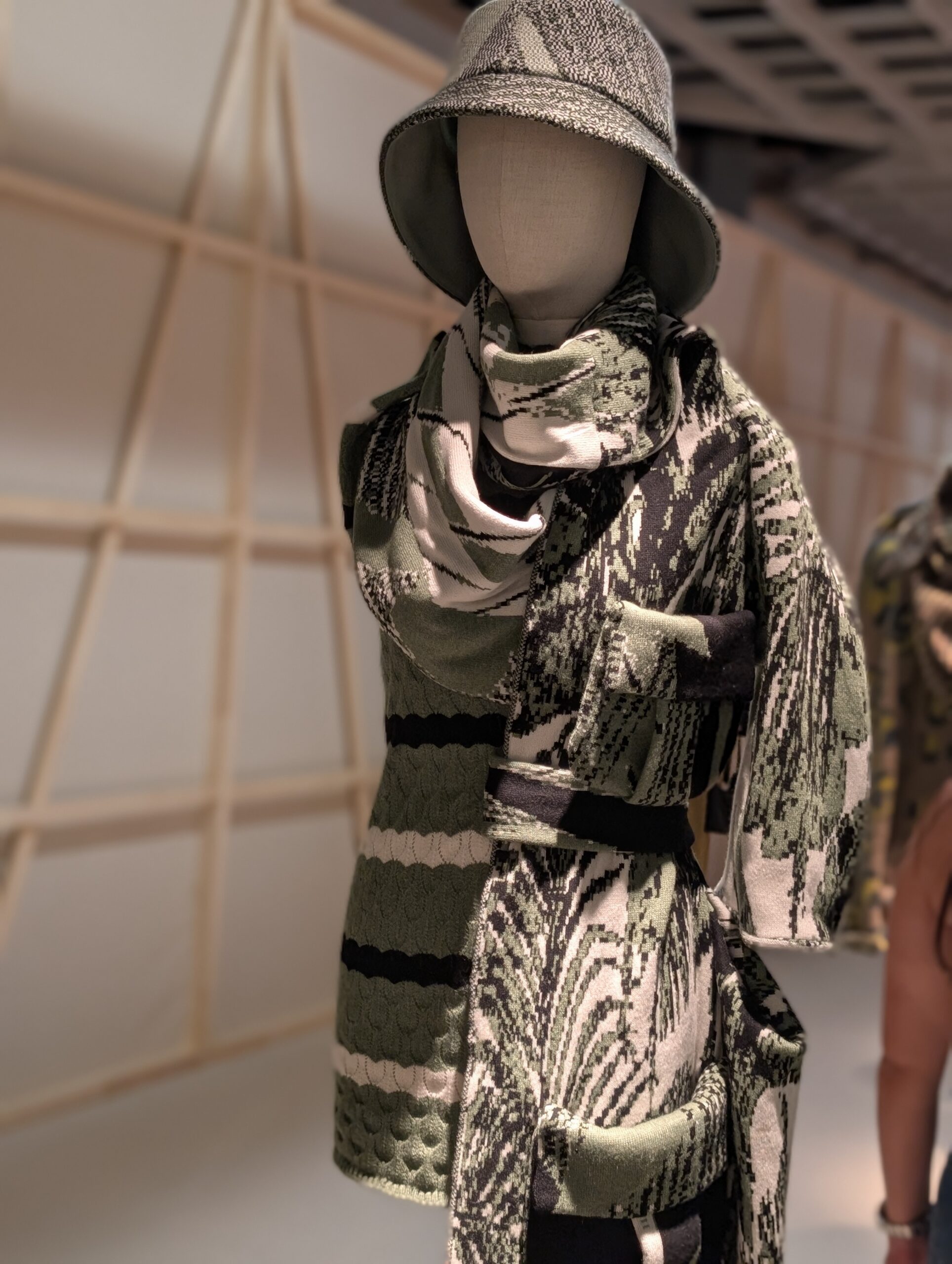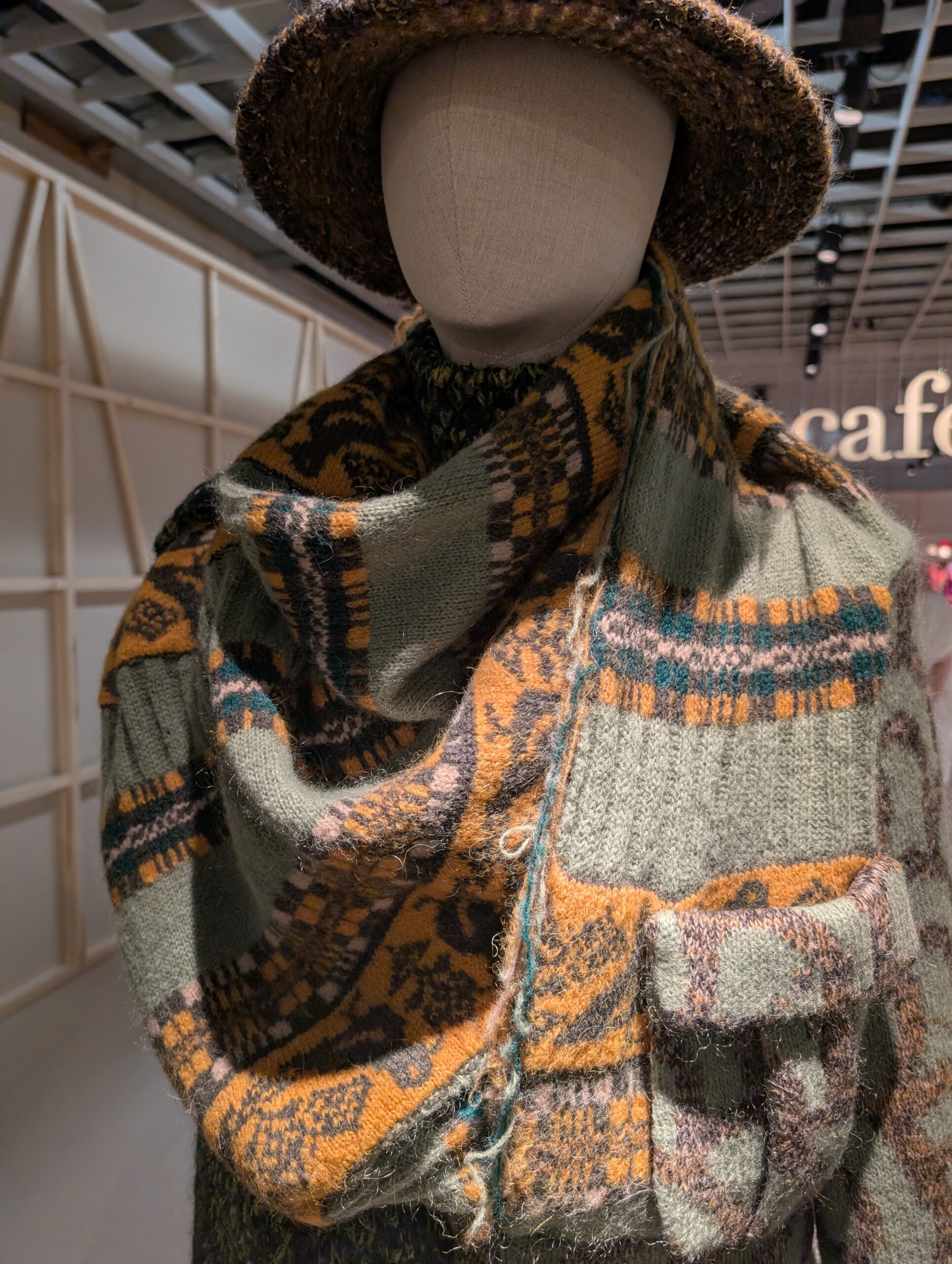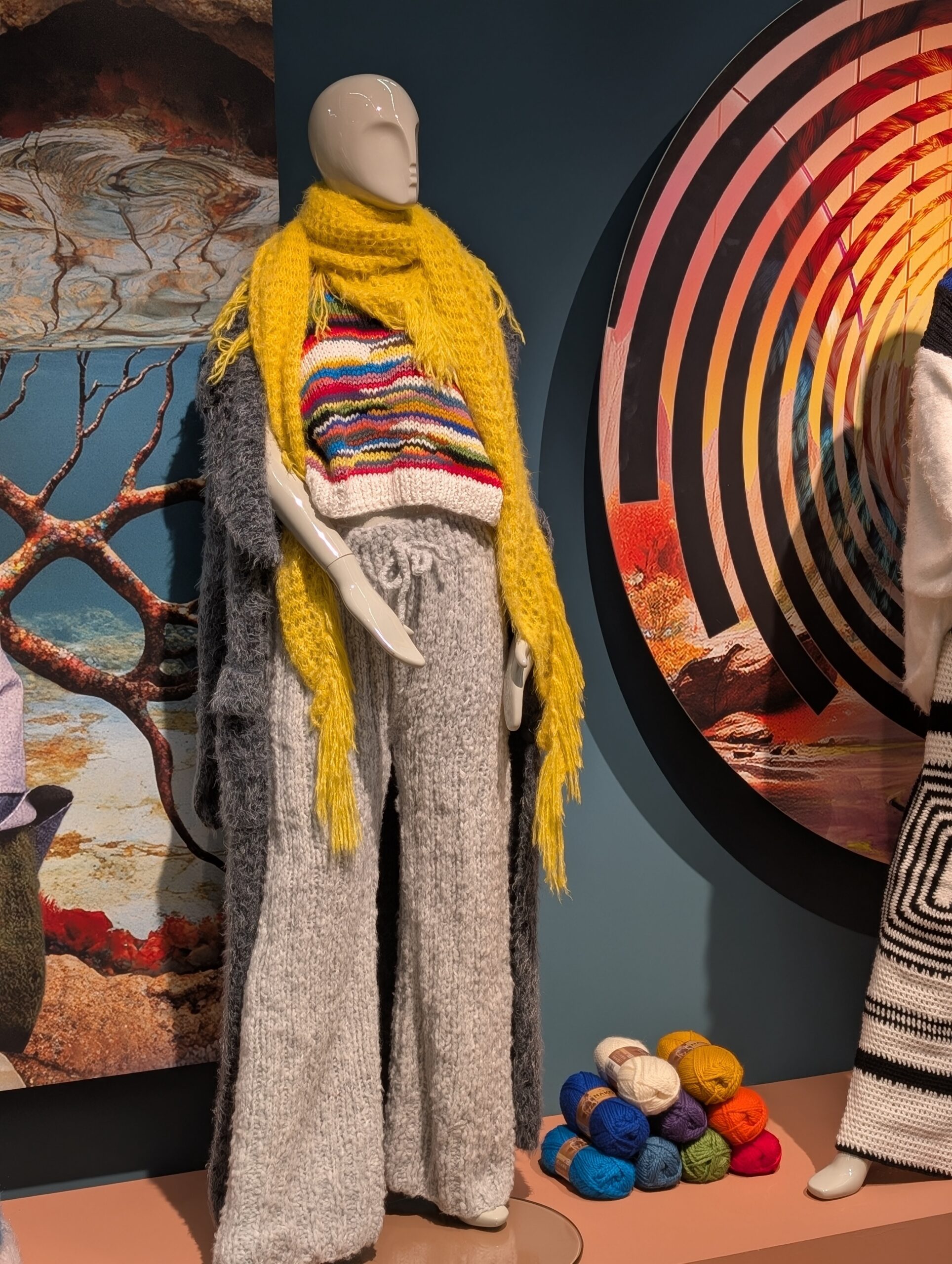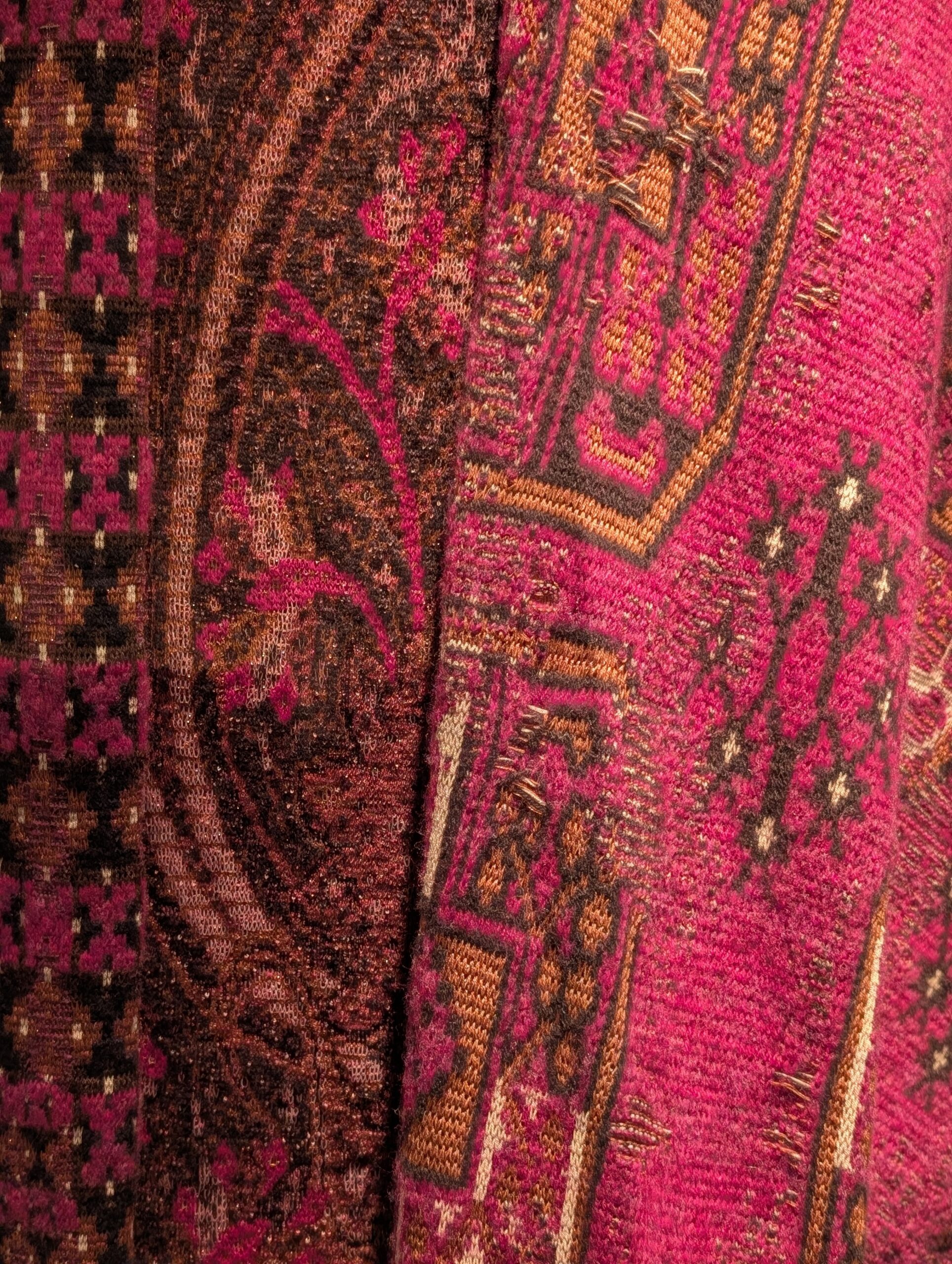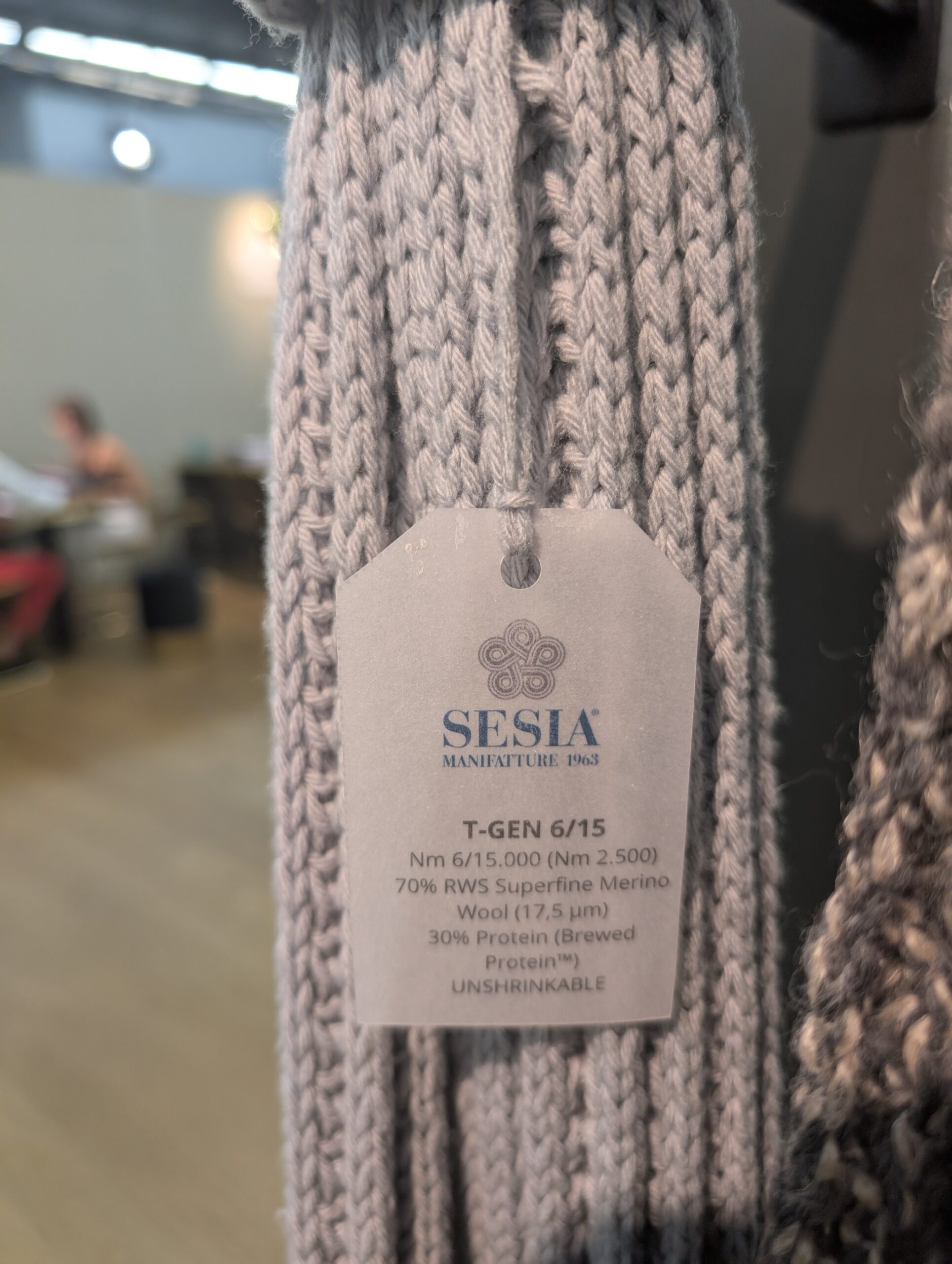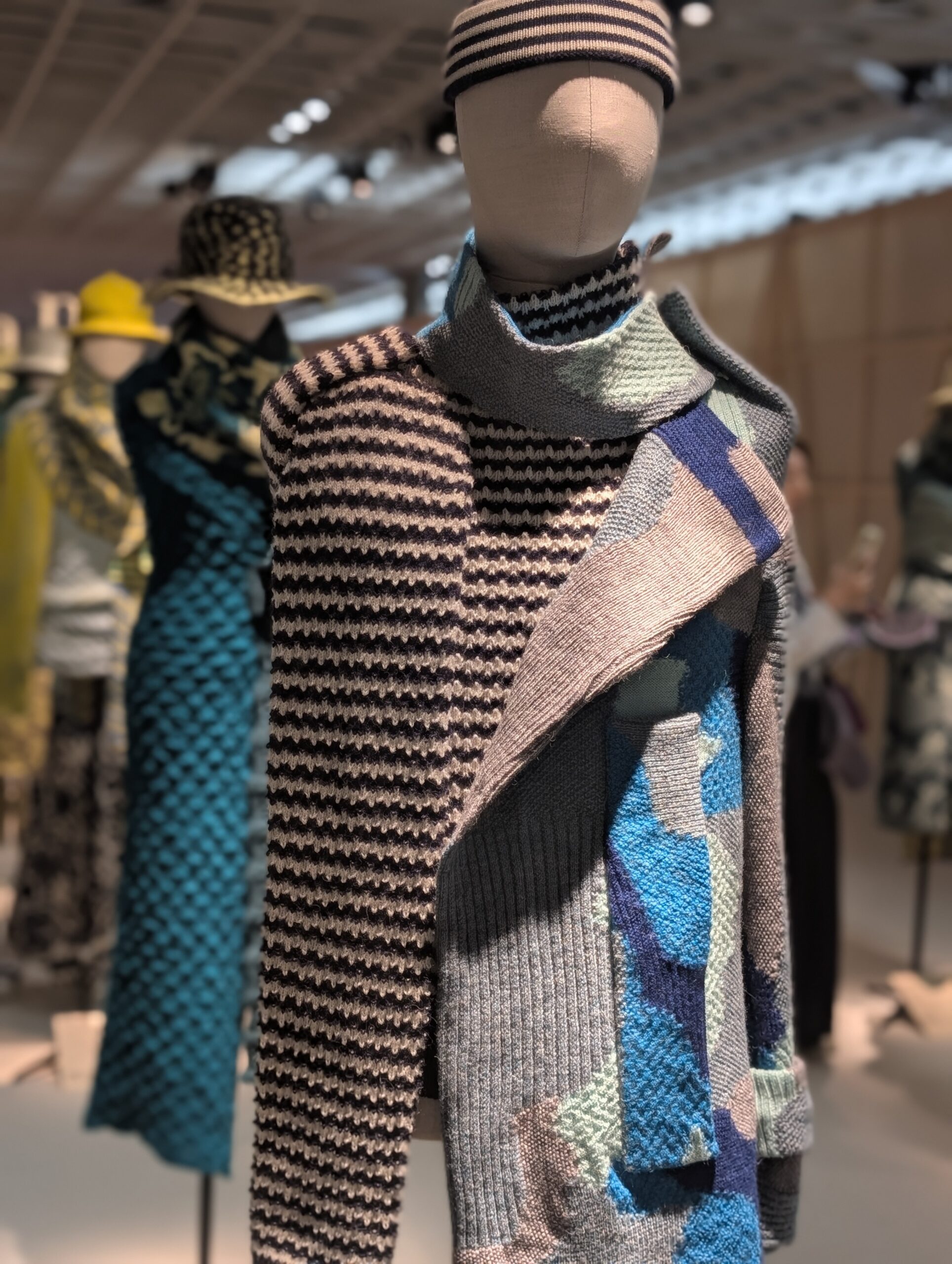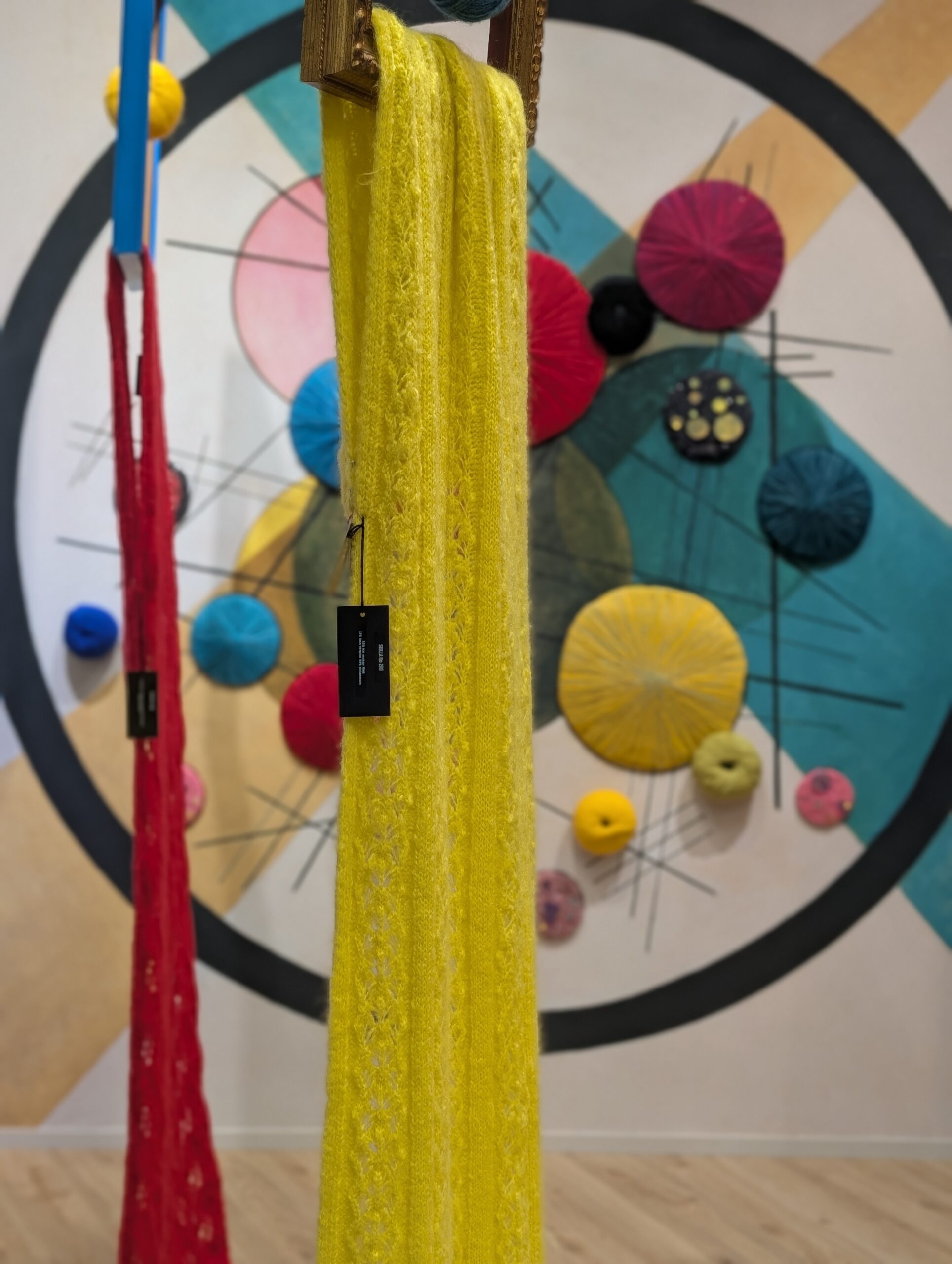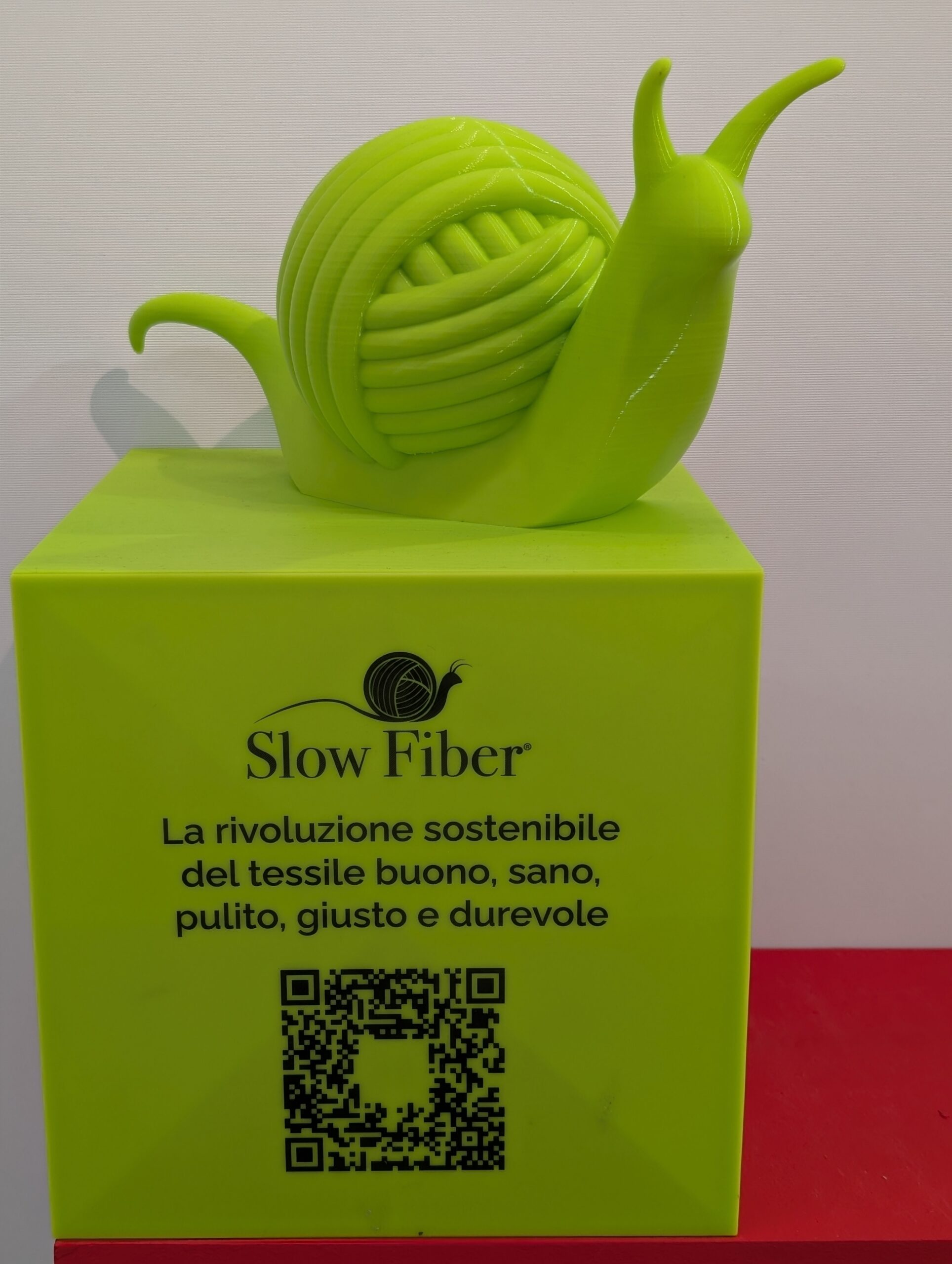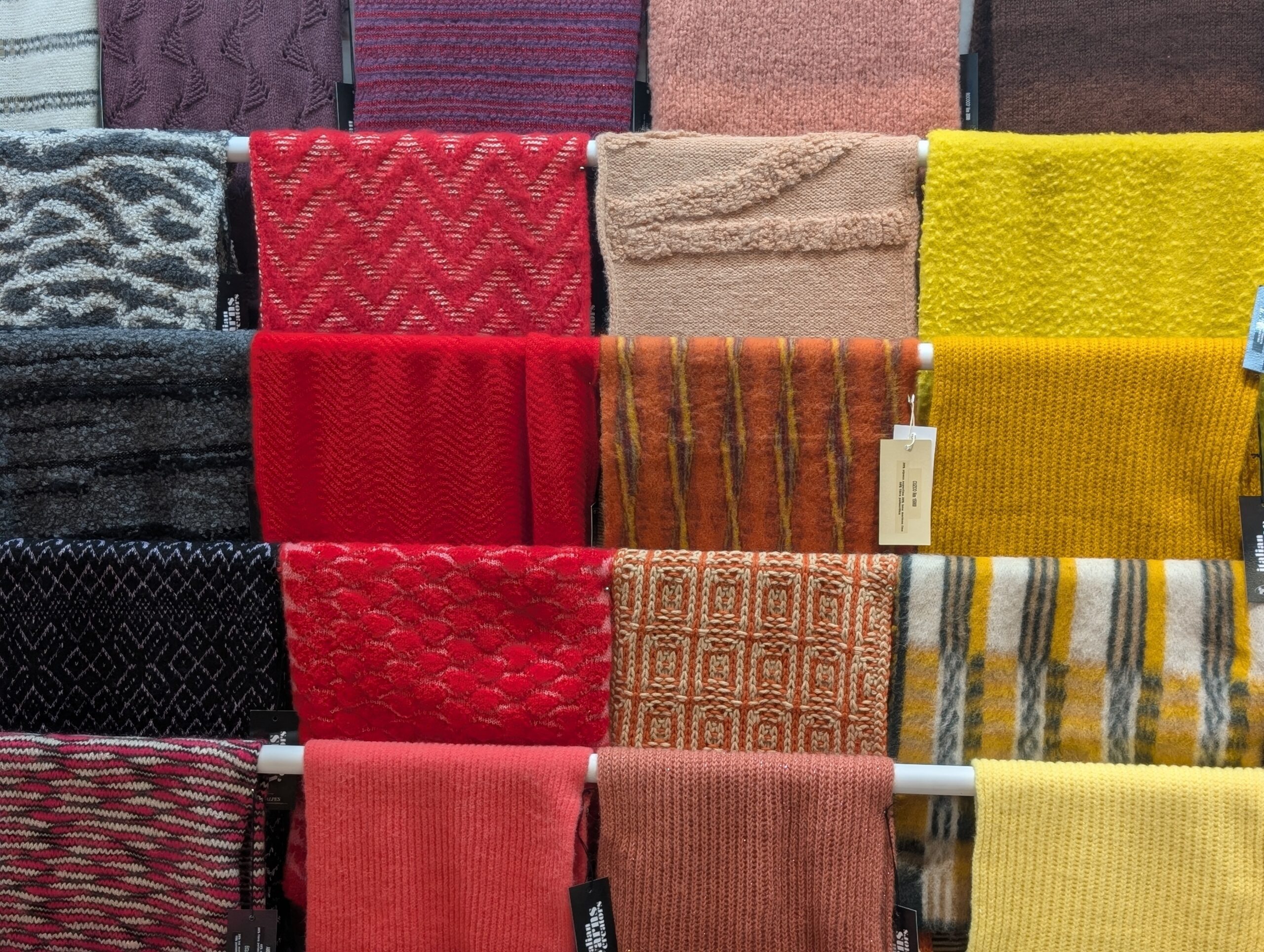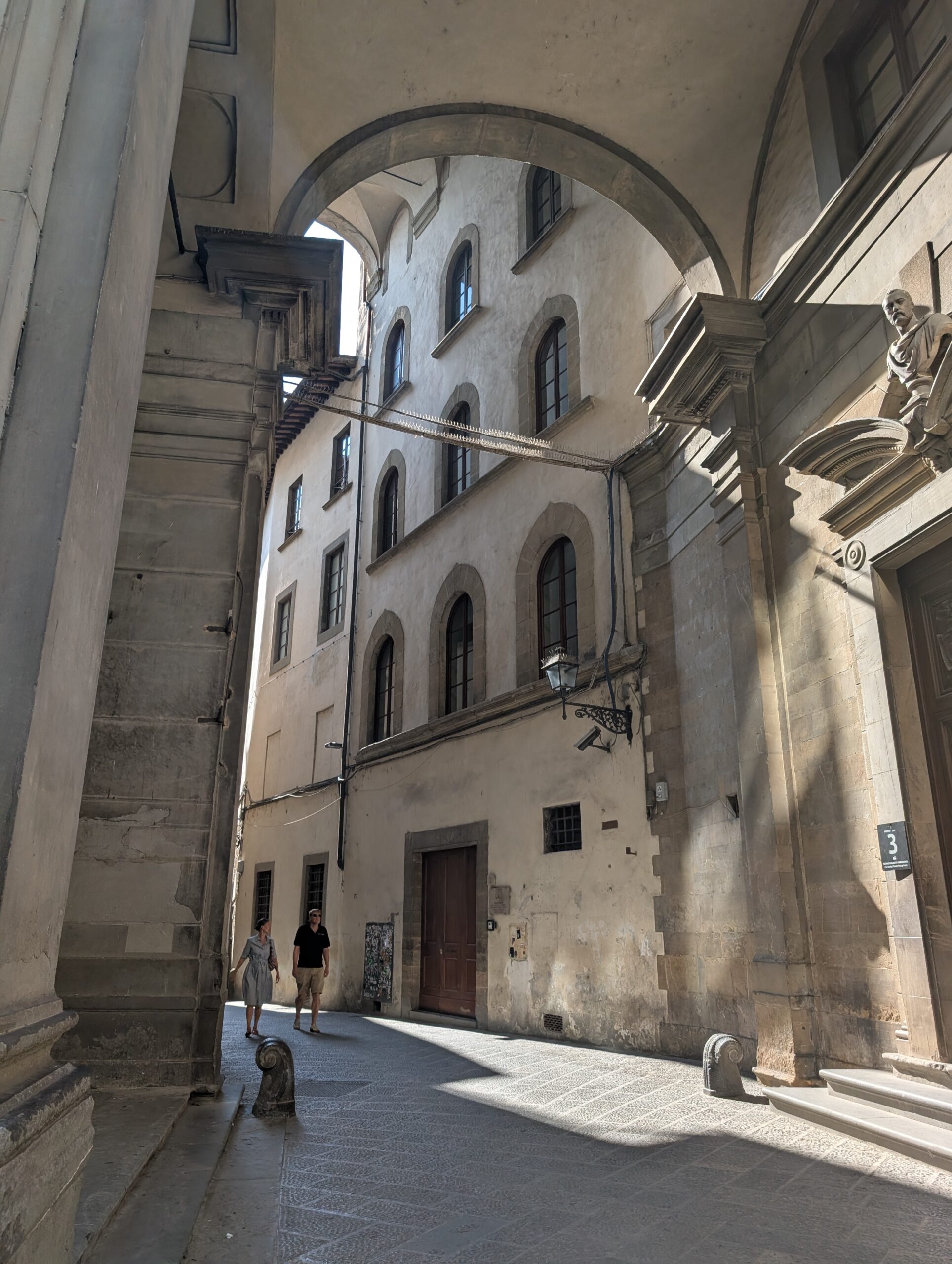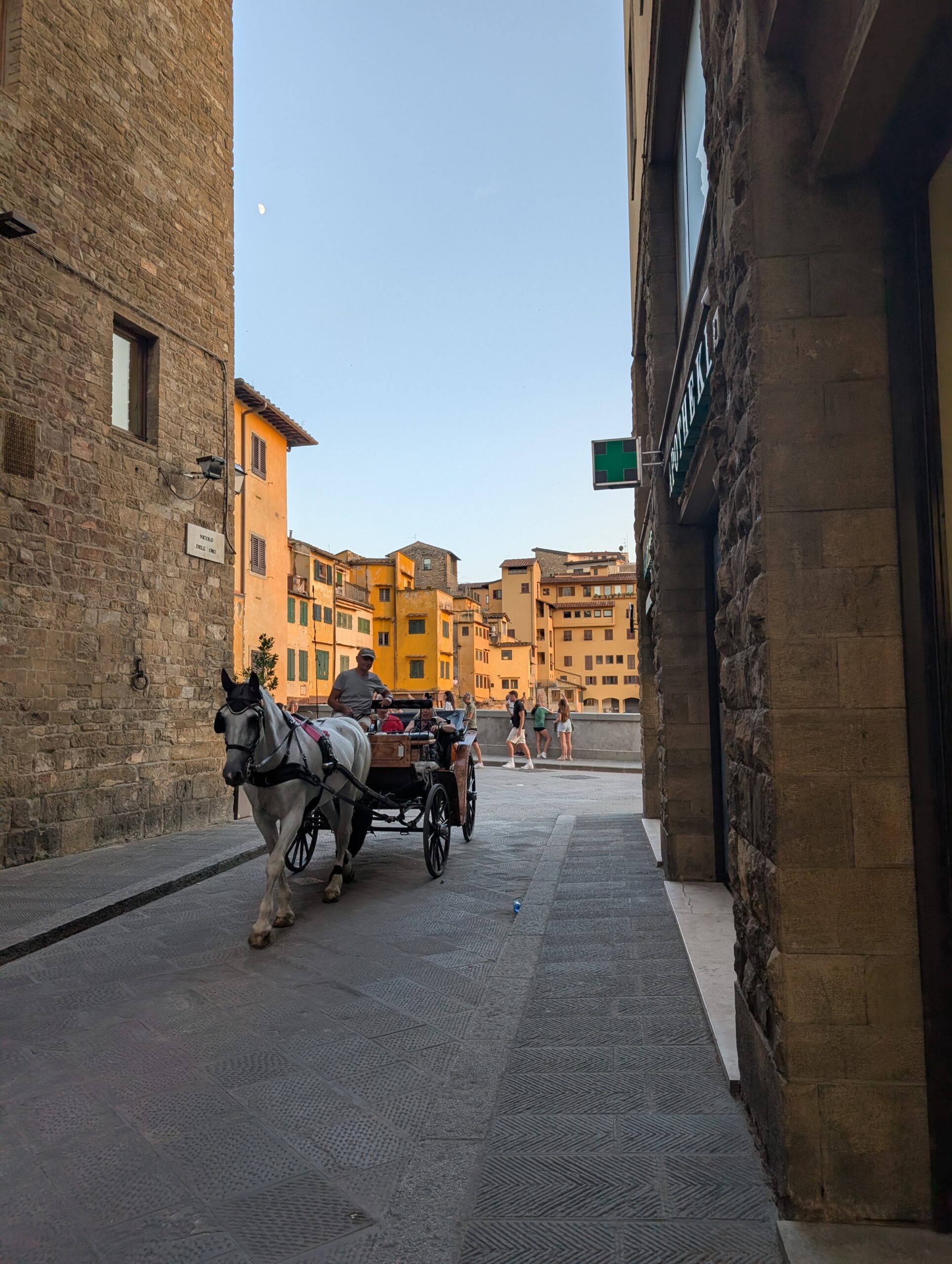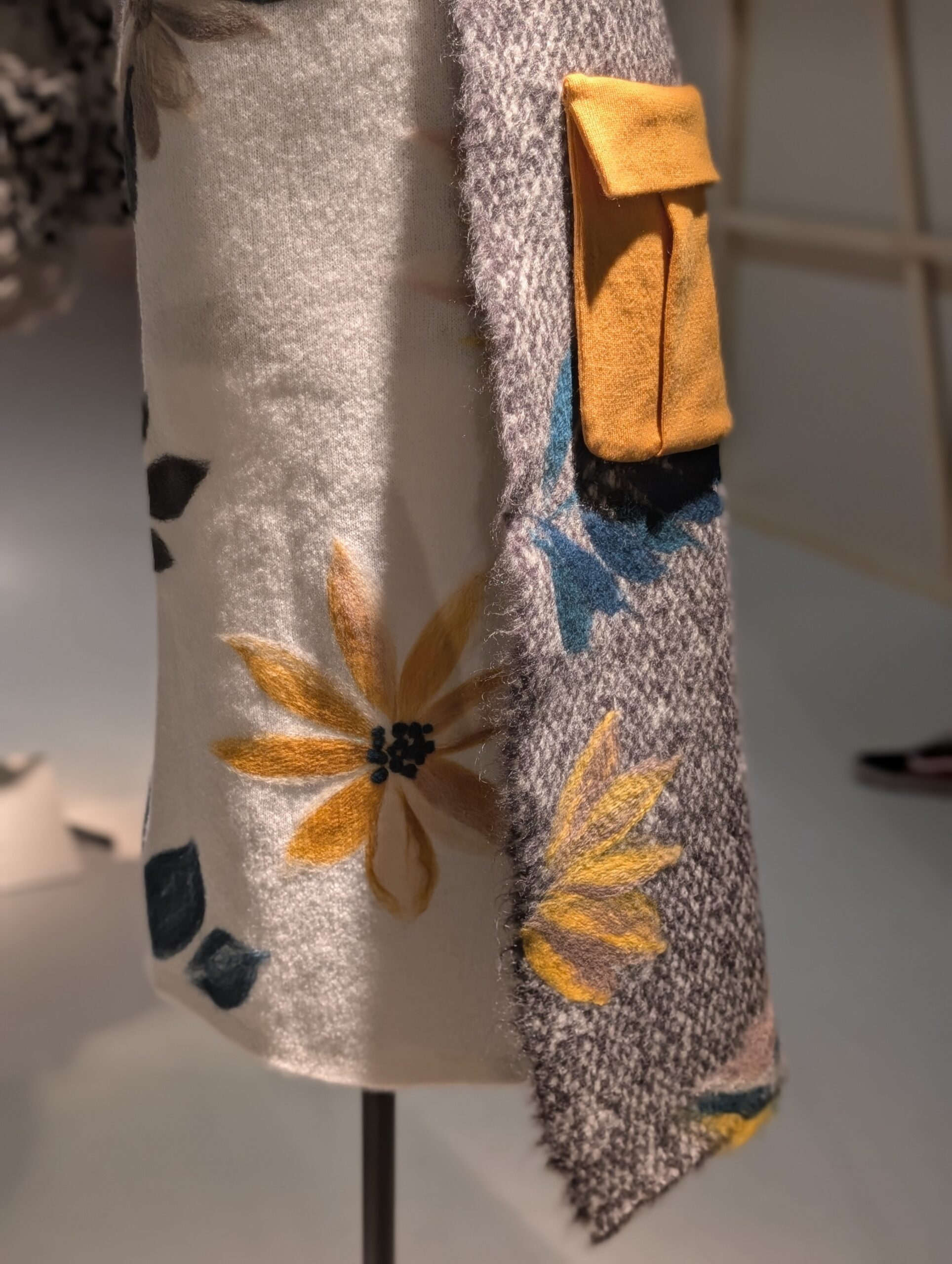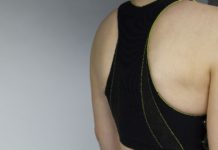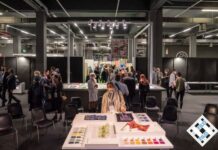Florence, Italy
UK based knitwear designer Jo Storie explains how knitwear takes on storytelling and innovation at A/W 26/27 Pitti Filati.
The A/W 26/27 edition of Pitti Filati once again positioned itself as a key global platform for innovation, material development, and knitwear trend forecasting. Acting as a barometer for the season ahead, the Florence-based event brought together mills, fibre innovators, designers, and technicians to explore the evolving landscape of knitwear — from yarn to final garment.

SHOWCASE: Research Area Themes
Three overarching narratives reinterpreted typical summer themes through a winter lens, pushing boundaries in colour, texture, and silhouette.
BLUNIFORM
This story channelled a nautical narrative rooted in traditional fishermen’s wear, naval uniforms, and the crisp geometry of blue-and-white pottery. With a subtle injection of ceremonial detail, it proposed a fresh winter take on classic seafaring style. Every shade of blue – from aqua and periwinkle to deep navy – was grounded by ivory and illuminated with touches of gold.
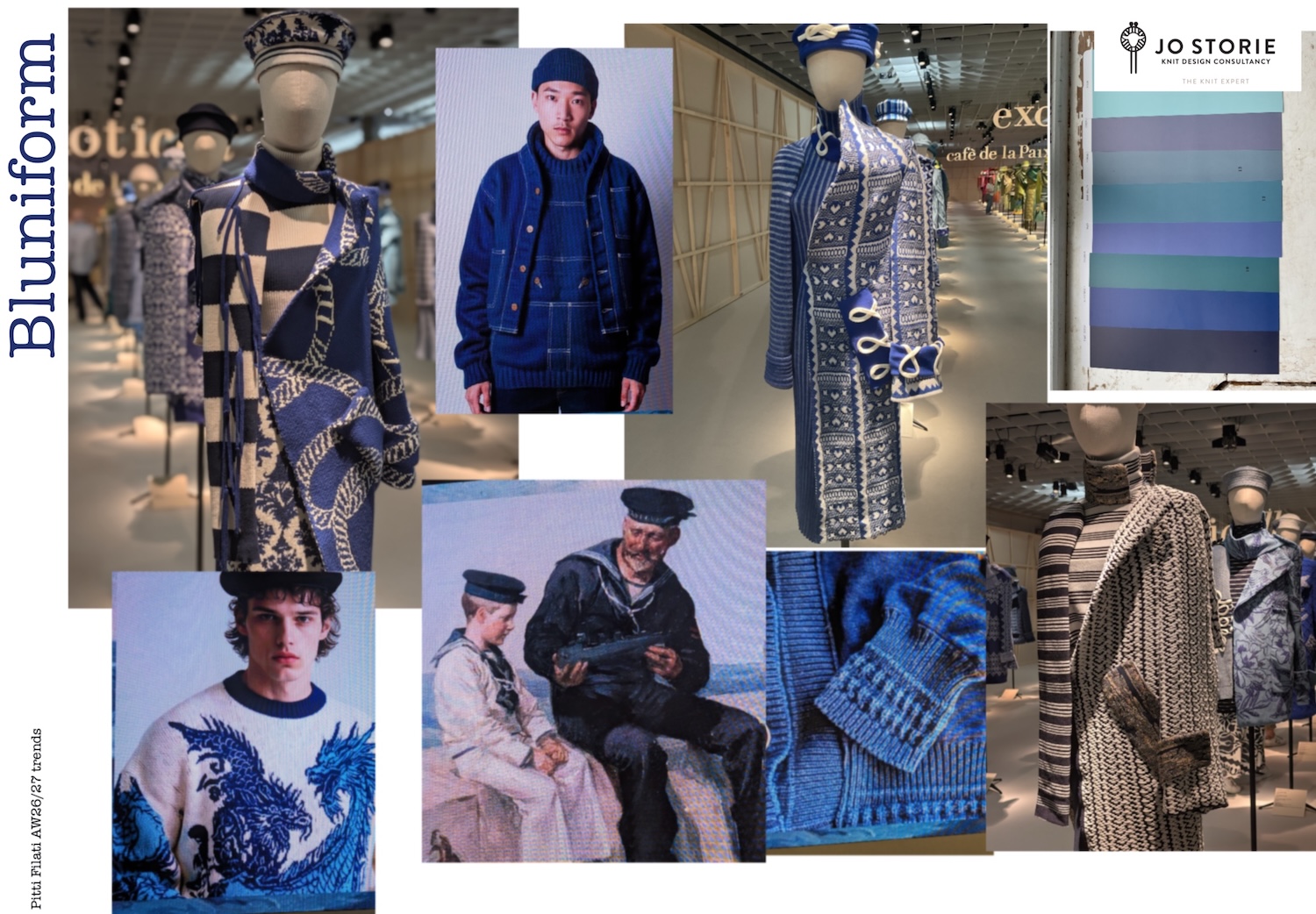
Silhouettes highlighted traditional shapes including double-breasted pea coats in Milano knits, sailor smocks with tie fronts, navy-style caps, and soft-tailored cardigans with epaulettes. Yarn selections focused on versatile 2/30s merinos from Tollegno and Zegna Baruffa, alongside heritage fibres from Todd & Duncan, Cariaggi, and Shepley Yarns. Sustainability was at the forefront, with the inclusion of Brewed Protein blends – most notably Sesia’s T-Gen, a 70% merino / 30% protein fibre mix.
The detailing paid homage to seafaring heritage with Gansey stitch references, structured Milano and interlock knits, graphic two-colour jacquards (multi-scale and reversible), printed fisherman ribs, and plaited cables. Military trims – gold buttons, medals, and braids – added layers of ceremonial sophistication.
EXOTICALL
This theme told a dreamy tale of faraway lands, blending jungle tropics, golden deserts, and wild flora and fauna in a luxurious escape. Influences ranged from vintage travel posters and storybook illustrations to safari wear and handcrafted textiles. The colour palette was inspired by nature, including sand, forest green, fern, olive, and wheat.
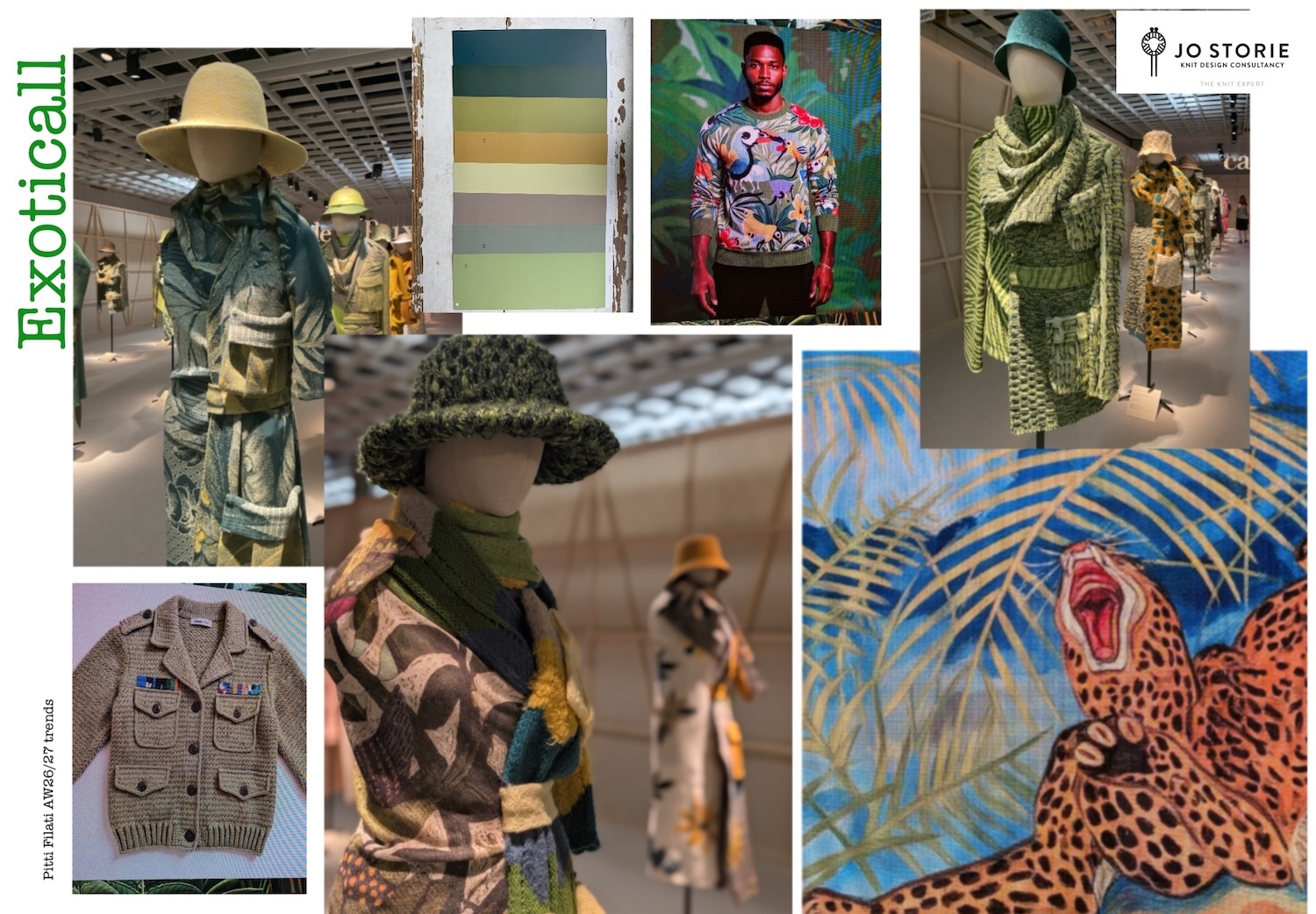
Garment shapes played with layering and drape: belted tunics, safari jackets, bucket hats, and folded constructions added tactile complexity. Alpaca and mohair blends featured prominently, offering hairy brushed textures for depth and softness. Raised surfaces and halo yarns enhanced the dimensionality of plush jacquards.
Artistic detail came through in scenic intarsias and jacquards depicting tigers, tropical birds, leaves, and florals. Birdseye jacquards layered colour and texture, while multi-structured fabrics used brushed floats and double-knits to create a rich, immersive effect.
CAFÉ DE LA PAIX
Inspired by the atmosphere of Moroccan café society and Ottoman opulence, this theme celebrated the warmth and exuberance of metallic textiles. Kaftans, turbans, shrugs, and draped capes appeared in a rich colour story of deep purple, ruby red, crimson, chocolate brown, hazelnut, and antique gold.
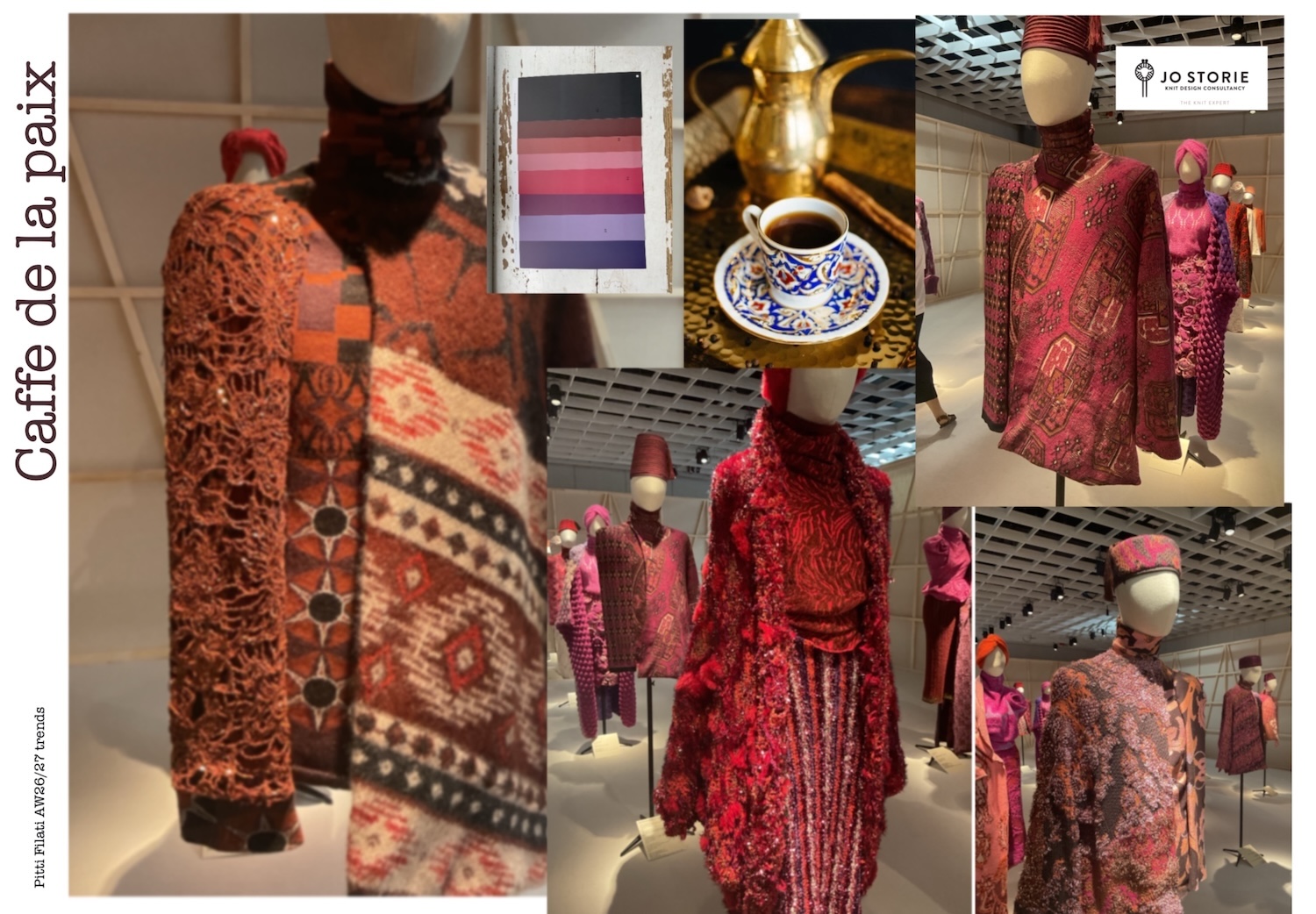
Silhouettes favoured slouchy ease with a ceremonial twist. Yarns included novelty blends offering textural contrast, metallic plaited structures, and bouclés incorporating silk and cashmere. Sesia’s Chamonix yarn, a luxe mix of merino, mulberry silk, and cashmere boucle, epitomised the narrative’s tactile elegance.
Techniques embraced maximalism: Ottoman ribs, puckered jacquards, crochet lace, inlay stitches, eyelash yarns, and space-dyed finishes all featured. The focus was on over-the-top embellishment and surface storytelling—an ode to tactile richness and visual splendour.
INNOVATION SPOTLIGHT: Yarns of Note
Brewed Protein
A major innovation this season came in the form of Brewed Protein—a lab-grown fibre developed through a fermentation process using plant-based ingredients. Already adopted by several top Italian mills, the fibre is biodegradable (98% in natural seawater within six months), reduces pilling when blended, and significantly lowers environmental and animal welfare impacts compared to conventional fibres.
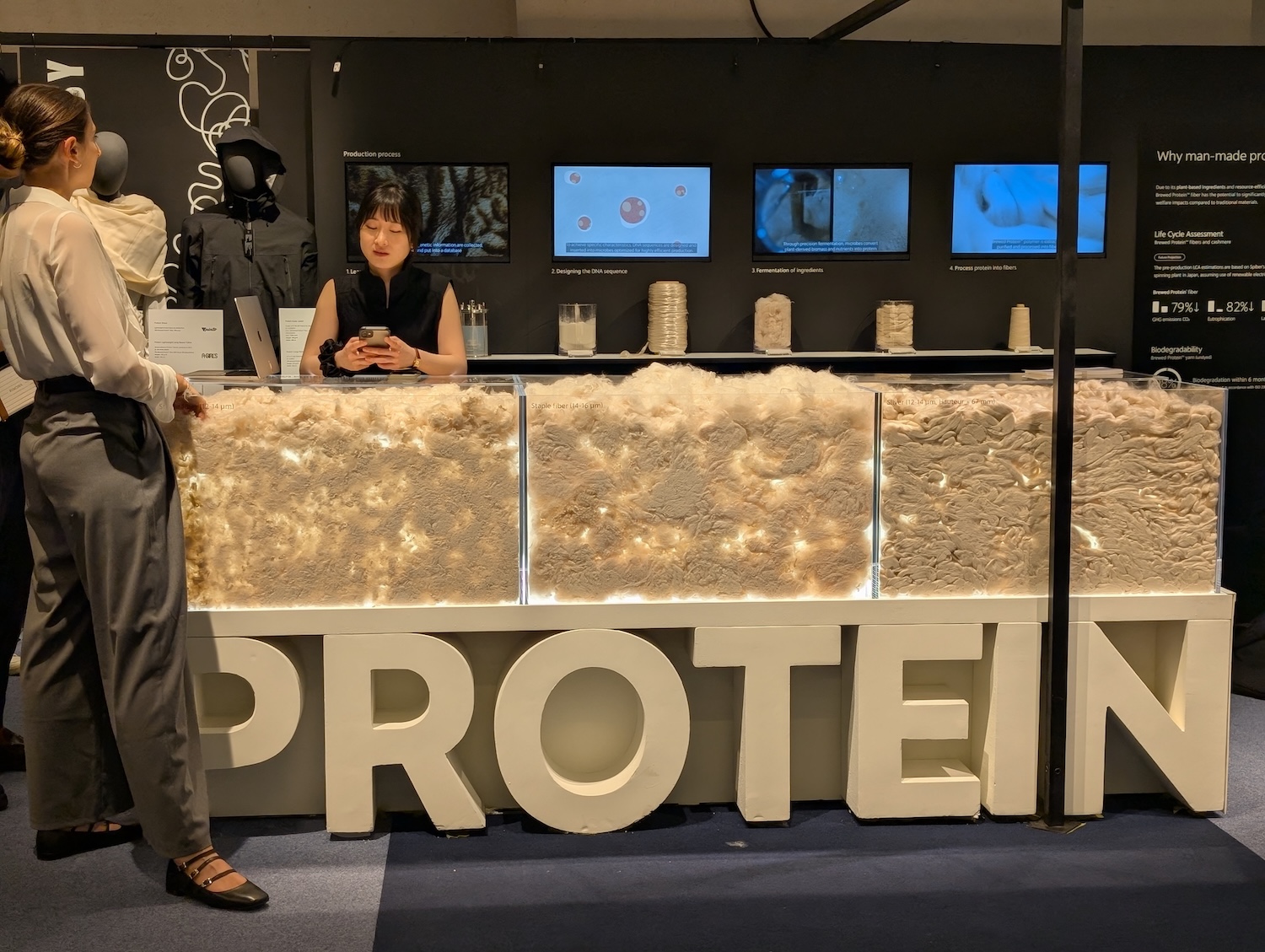
Positioned alongside materials such as milk fibre and spider silk, Brewed Protein offers broader commercial application and compelling sustainability credentials. It signals a shift toward viable next-gen materials in knitwear production.
Performance Cashmere
Cashmere took on new technical characteristics for A/W 26/27, embracing brushed and felted textures, as well as durable blends with silk, cotton, and merino. Recycled cashmere yarns were also improved with virgin content for added stability.
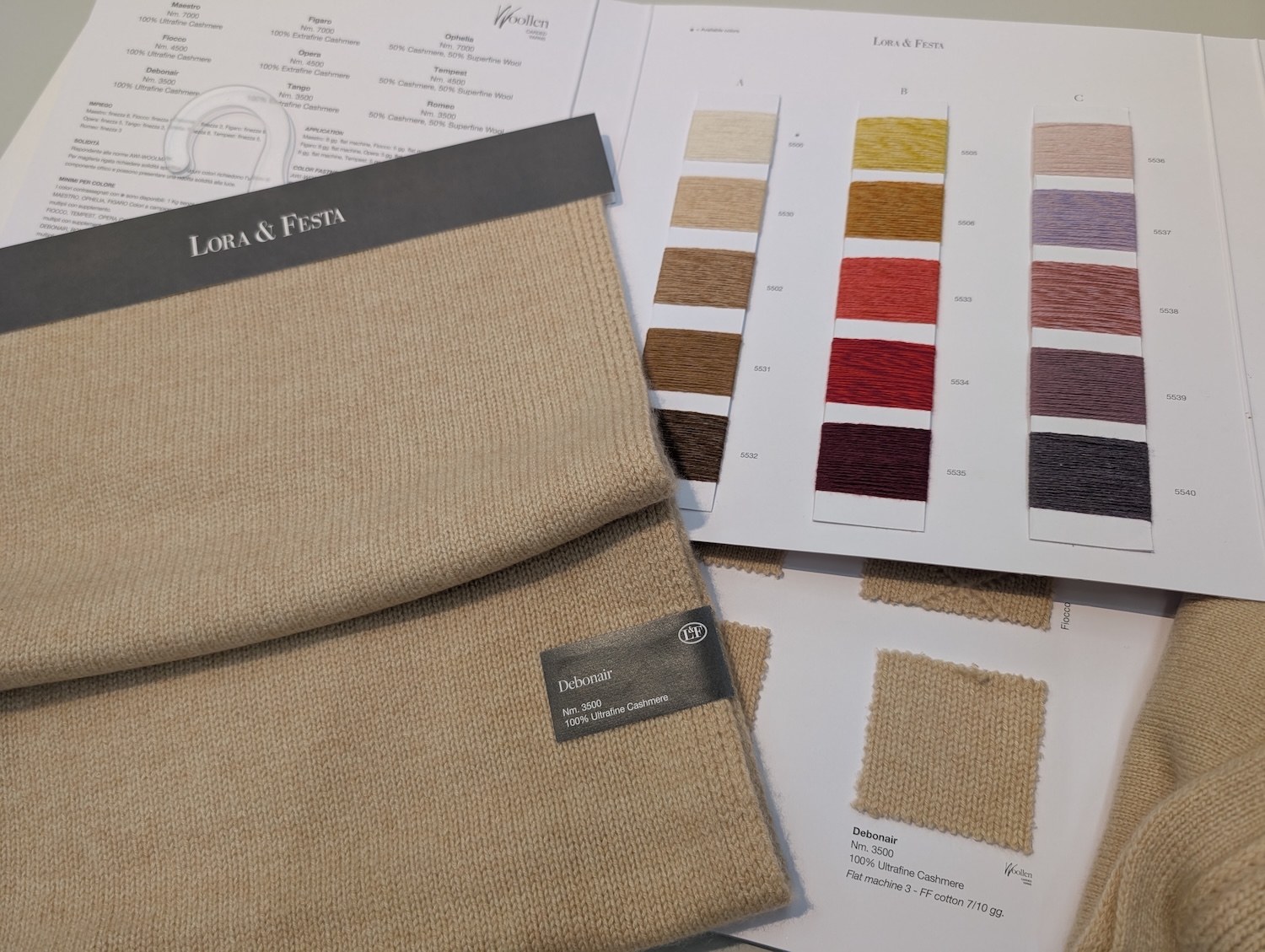
Lora & Festa stood out for its innovative offer:
- Hydro Cashmere: Water-resistant and washable
- Nano Cashmere: Breathable and pill-resistant
- Easy Cashmere: Machine washable and low-temp tumble dryable
Their bouclé yarns – described as “like marshmallow pillows” – delivered airy softness and dreamlike tactility.
British Wool’s Bold Return
British wool took on a stronger role this season, with clear support from the British Wool Board and participation by standout mills including Shepleys, Hinchcliffe, and Pecci. There was a renewed celebration of traditional fibres and their regional provenance, marking British wool as both a heritage and forward-looking option.
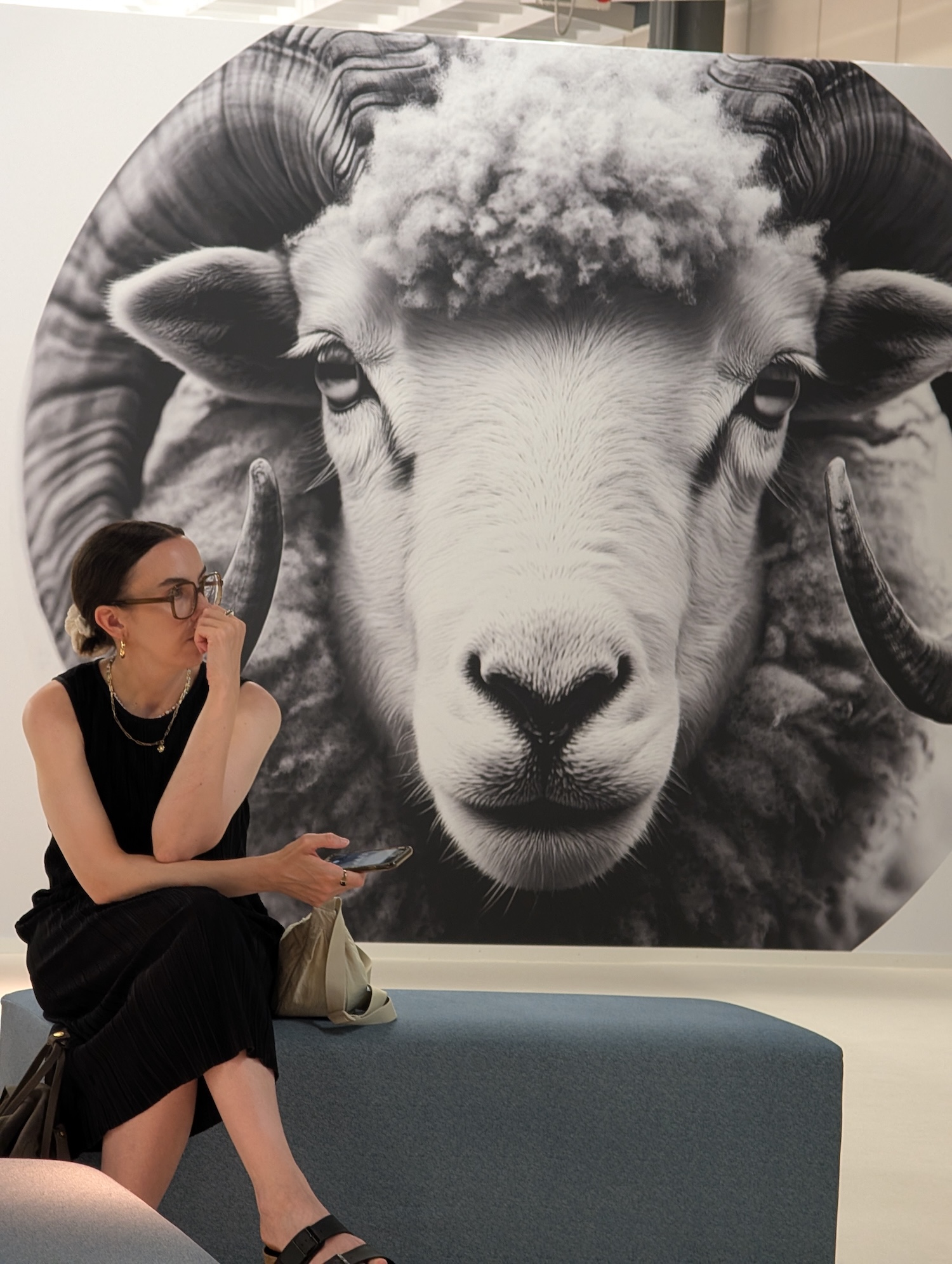
Slow Wool & Transparency
Visitors to Pitti Filati encountered a new mascot—a lime green snail—symbolising the Slow Fibre initiative. QR codes on sample displays led to full disclosure of fibre provenance, sustainability measures, and ethical production methods. This emphasis on transparency linked fibre production to food ethics, reinforcing the idea of thoughtful consumption.
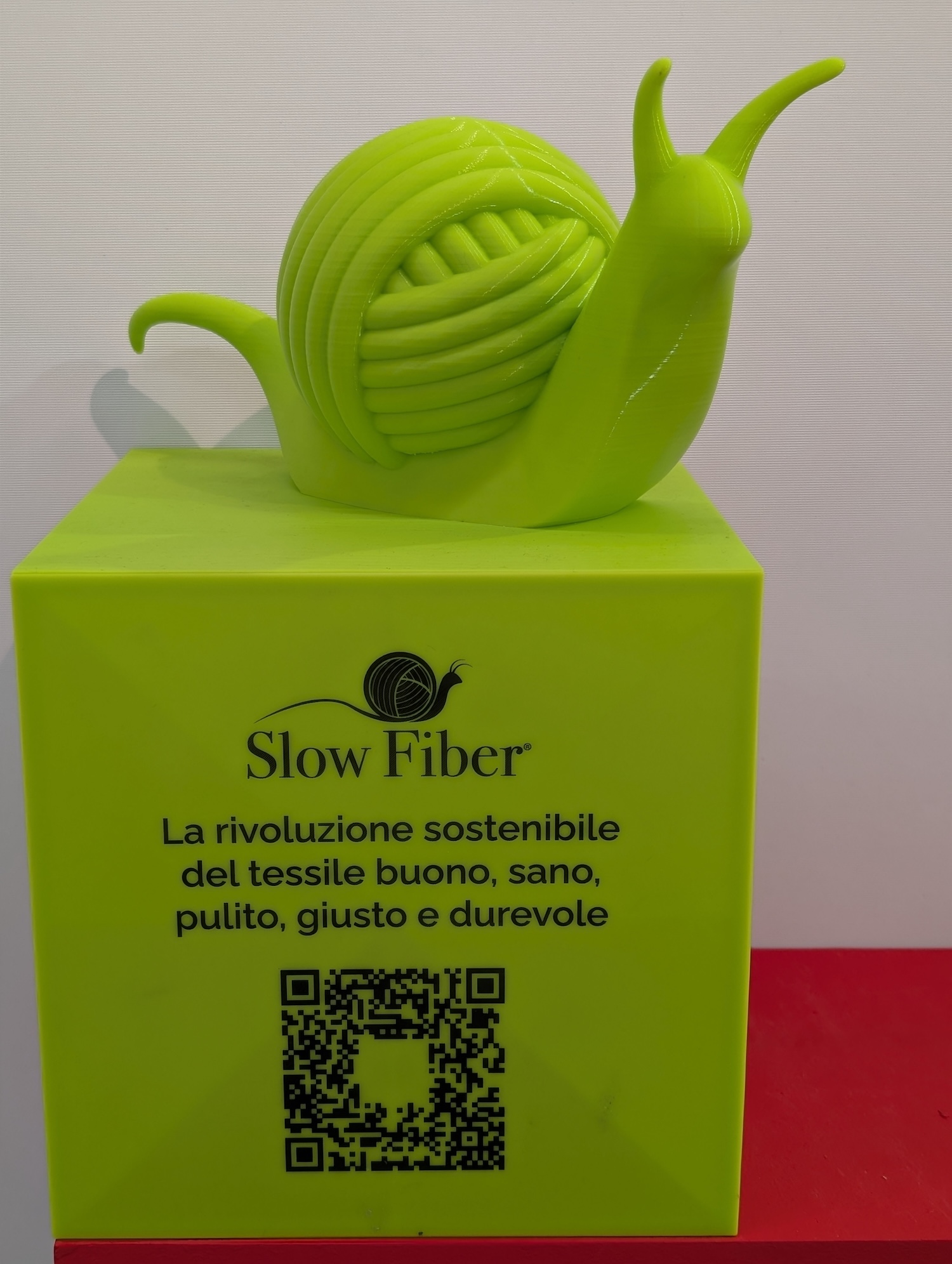
Customisation & Craft
Customisation emerged as a leading trend. Designers explored techniques such as:
- Custom-Easy: Repurposing deadstock via needle punching and embroidery
- Crewelwork: Applied wool rovings
- Hand-finishing: Crochet inserts and hand-knitted trims added to machine knits
These methods highlighted a hybrid aesthetic—merging high-tech production with artisanal craftsmanship.
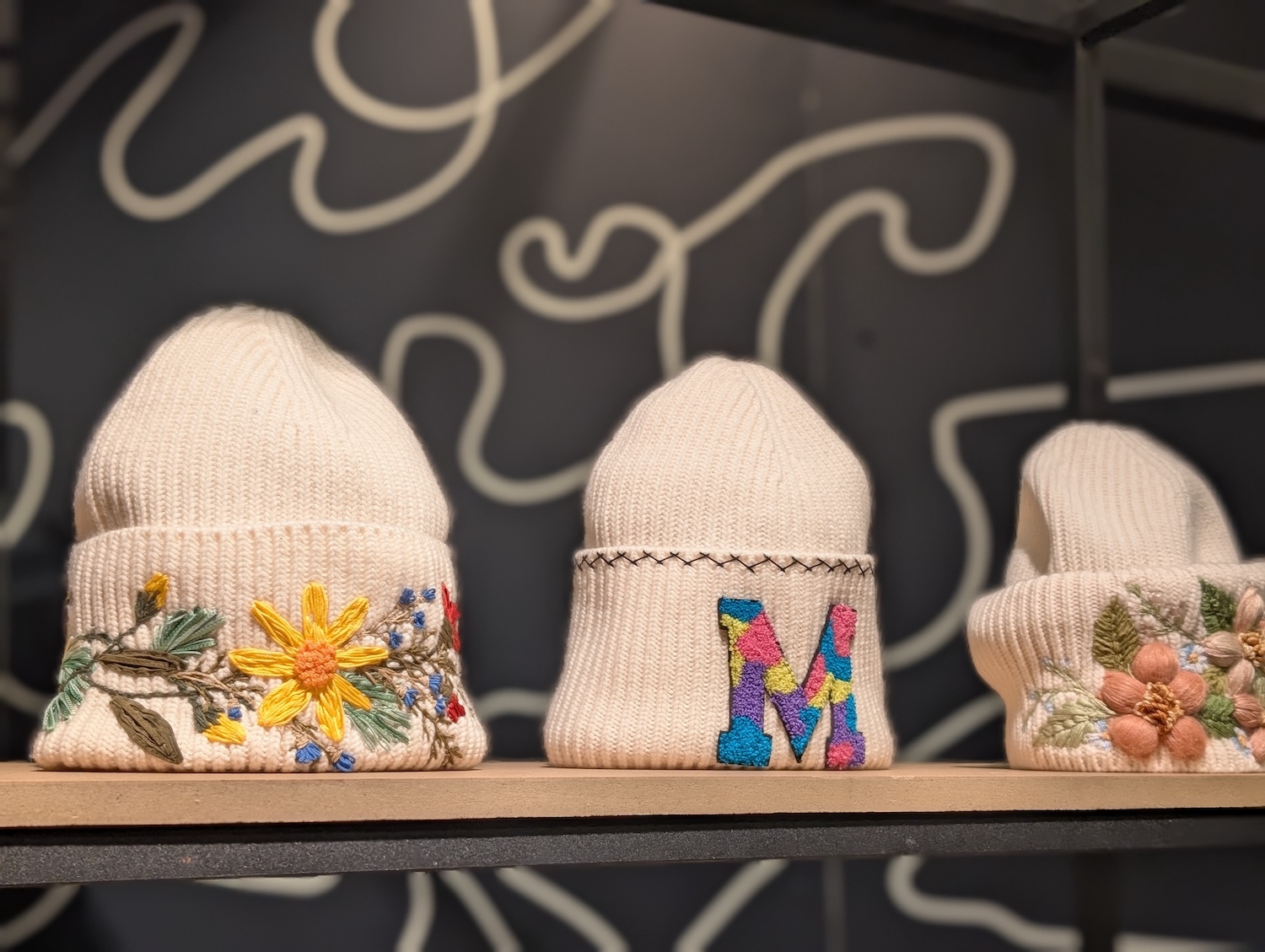
Technology Shift: A new contender in knit simulation
While companies like Shima Seiki and STOLL have historically dominated the conversation on knitting technology, this season introduced an unexpected player: Mandarin Technology. The Italian firm presented a new machine capable of simulating hand knitting at 1.5 gauge. The resulting swatches closely resembled traditional hand-knitted textures.
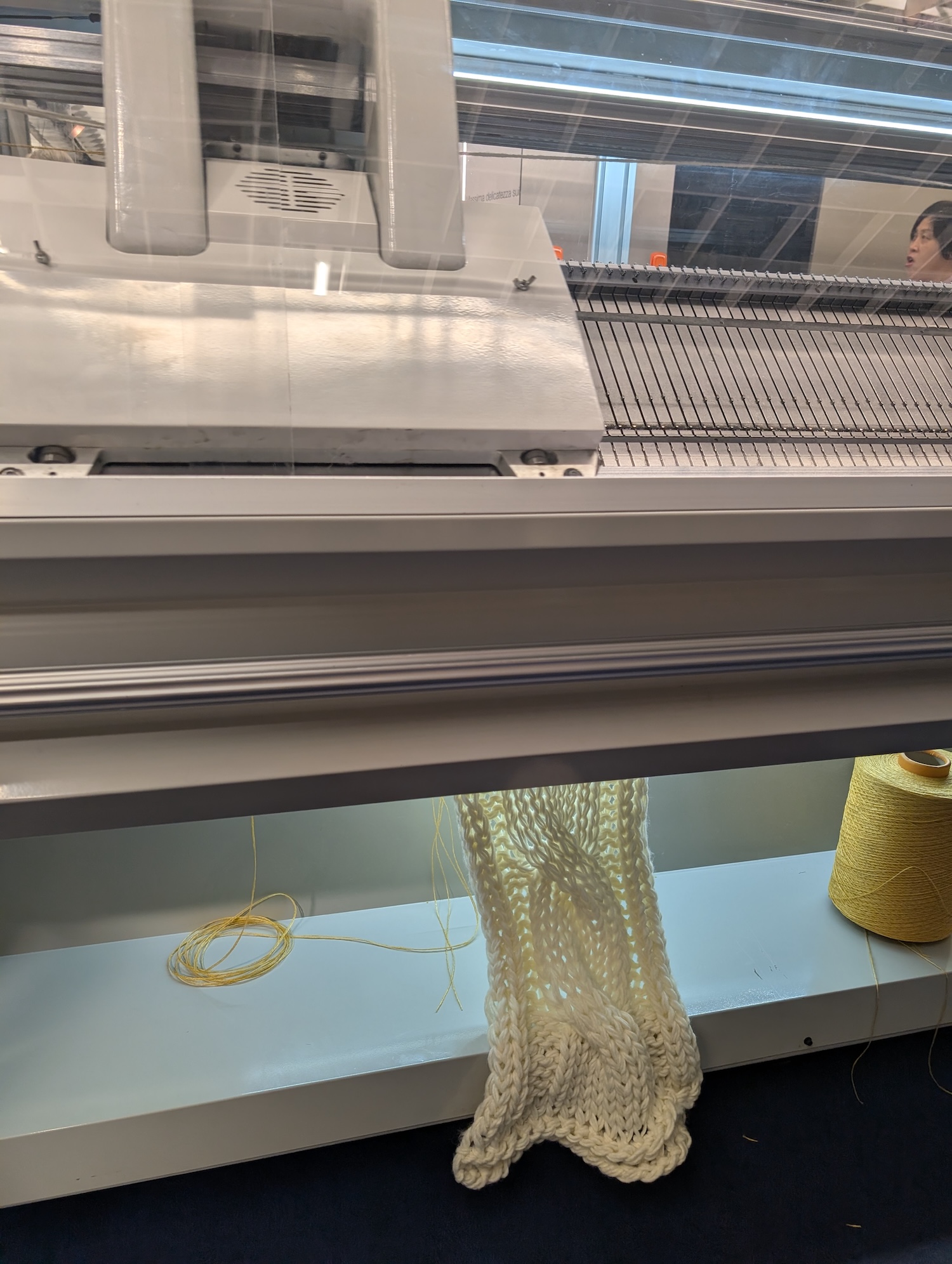
Though its ability to replicate more complex techniques—such as Möbius constructions, freeform shaping, or intricate stitchwork—remains under evaluation, the machine’s output demonstrated both technical proficiency and aesthetic potential. This could mark a shift toward new approaches in automated, craft-style knitwear production.
Pitti Filati remains a vital compass for knitwear professionals, acting as a platform to explore new ideas, technologies, and raw material innovations. What stood out this season was the marriage of tradition and modernity, of handwork and machine, and a shared commitment to slowing down, making thoughtfully, and creating with narrative.
More images from Pitti Filati 97
About Jo Storie & The Knit Expert
With over 30 years in the knitwear industry, Jo brings deep expertise in design, development, and production – from artisan craftsmanship to cutting-edge technical innovation.
Through Jo Storie Knit Design Consultancy – The Knit Expert, Jo helps brands, mills, and designers transform creative ideas into commercially successful, sustainably made knitwear. Her work bridges luxury aesthetics with responsible sourcing and manufacturing – whether it’s Italian cashmere, British wool, or bespoke fibre innovation.
Jo collaborates closely with clients across the UK and Europe, offering creative direction, trend forecasting, yarn sourcing, and product development. From concept to production, she supports teams to elevate their knitwear offering with clarity, originality, and technical precision.

Contact details
If you’re looking for a trusted partner to bring depth, creativity, and commercial understanding to your knitwear journey — let’s talk.
Based in Northumberland, UK | Working globally
+44 (0)7515 900 542

Subscribe To Our Newsletter
Join our mailing list to receive the latest news and updates from our team.


